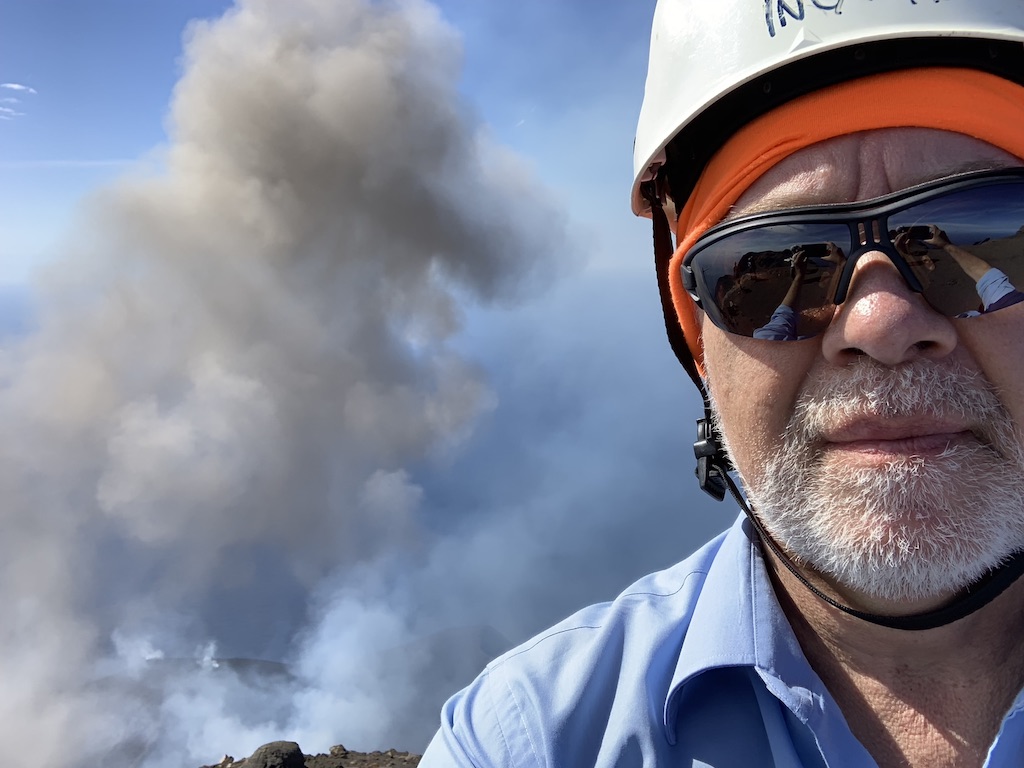
Harry H. Hess Medal
Information on the Hess Medal
The Harry H. Hess Medal is given annually to a senior scientist in recognition of outstanding achievements in research on the constitution and evolution of the Earth and other planets. Recipients of this award typically conduct research in the following disciplines: Earth and planetary surface processes, mineral rock physics, planetary sciences, study of the Earth’s deep interior, techtonophysics, volcanology, geochemistry, and petrology.
The Hess Medal is named in honor of Harry H. Hess, who made many contributions to geology, mineralogy, and geophysics. Hess served multiple terms as an AGU section president — for the Geodesy section (1950–1953) as well as the Tectonophysics section (1956–1959). He made major contributions to the study of the oceanic lithosphere, including the concept that convection cells in the mantle were the driving force for seafloor spreading.

Award benefits
-
1Awardee will be made an AGU Fellow (if the honoree has been an AGU member for three consecutive years and is not already a Fellow)
-
2Recognition at the AGU Fall Meeting during the award presentation year
-
3Four complimentary hotel nights at the AGU Fall Meeting during the award presentation year
-
4Two complimentary tickets to the Honors Banquet at the AGU Fall Meeting during the award presentation year
Eligibility
To better understand eligibility for nominators, supporters and committee members, review AGU’s Honors Conflict of Interest Policy.
-
1
Nominees: The nominee should be a senior scientist, but is not required to be an active AGU member. They should be in compliance with the Conflict of Interest Policy.
-
2
Nominators: Nominators must be active AGU members and in compliance with the Conflict of Interest Policy. Duplicate nominations for the same individual will not be accepted. However, one co-nominator is permitted (but not required) per nomination.
-
3
Supporters: Individuals who write letters of support for the nominee are not required to be active AGU members but must be in compliance with the Conflict of Interest Policy.

Nomination package
Your nomination package must contain all of the following files, which should be no more than two pages in length per document. For detailed information on the requirements, review the Union Awards, Medals and Prizes Frequently Asked Questions.
- A nomination letter with one-sentence citation (150 characters or less). Letterhead stationery is preferred. Nominator’s name, title, institution, and contact information are required. The citation should appear at either the beginning or end of the nomination letter.
- A curriculum vitae for the nominee. Include the candidate’s name, address and email, history of employment, degrees, research experience, honors, memberships, and service to the community through committee work, advisory boards, etc.
- A selected bibliography stating the total number, the types of publications and the number published by AGU.
- Three letters of support not including the nomination letter. Letterhead is preferred. Supporter’s name, title, institution, and contact information are required.


Recipients

Catherine A McCammon
Citation
Catherine A. McCammon has been a leading figure in the mineral physics of Earth’s interior throughout her career and has made numerous key discoveries on the redox state of Earth and crystal chemistry at high pressures and temperatures that have been remarkably influential. Catherine is, without doubt, the foremost expert on Mössbauer spectroscopy in the field of Earth sciences. Her development in the 90s of a Mössbauer milliprobe was a game changer for understanding redox processes in the deep interior as it enabled the valence state of iron in ultrasmall samples from high-pressure experiments and natural mineral inclusions to be quantified. Catherine’s expertise in this important technique also resulted in her collaborating with many scientists from a wide range of disciplines. She has also been at the vanguard of developing synchrotron-based Mössbauer methods that allow even samples from diamond anvil cell experiments of a few hundredths of a millimeter to be analyzed.
In a discovery that profoundly changed our view of the oxidation state of Earth, Catherine showed, through high-pressure and -temperature experiments, that bridgmanite, the most abundant mineral of Earth’s lower mantle, contains large amounts of ferric iron. She also confirmed this by analyzing tiny mineral inclusions in natural diamonds that had originally crystalized as bridgmanite in the lower mantle. Catherine and colleagues showed that bridgmanite must appropriate oxygen to make ferric iron through charge disproportionation of ferrous iron, leading to the precipitation of metallic iron, which has major implications for the redox evolution of the silicate Earth. Catherine also elucidated the spin state of iron in bridgmanite at lower mantle conditions, demonstrating a high- to intermediate-spin transition near the top of the lower mantle. Taken together with her research on bridgmanite ferric iron, Catherine’s work has been instrumental in defining the physical and chemical properties of the most abundant mineral on Earth. Her innovative approaches and careful attention to important details have established her reputation as a rigorous researcher producing unique and reliable measurements at the very limit of attainable conditions. The results of her studies have been used to interpret physical properties of the deep mantle, such as seismic wave velocities and electrical conductivity, and place new constraints on the formation and evolution of Earth. Catherine has also generously served the scientific community in numerous editorial and leadership roles and is a very deserving recipient of the Harry H. Hess Medal of AGU.
— Dan Frost
University of Bayreuth
Bayreuth, Germany
Response
I am humbled to receive this honor. Indeed, the award is as much about opportunities as it is about achievements. I am grateful to everyone who gave me those opportunities and, especially, that I had the capacity to take advantage of them.
Two organizations stand out on my path to this award, and by organizations I really mean the individuals who made those organizations what they are. Bayerisches Geoinstitut, my career home for the past 33 years, provided me with opportunities to develop what was basically a niche method into a useful tool to probe Earth’s interior. Indeed, it is hard to imagine being able to achieve what I did anywhere else. I had access to extensive resources and, more importantly, enthusiastic colleagues who allowed me to thrive in the open and collaborative environment of the institute. Who wouldn’t be motivated by the stimulating atmosphere to do their best? I learned the incredible power of team work and how the skills of individuals can be combined to achieve goals that greatly exceed the sum of their parts. The other organization on my path to this award is AGU. I got to be known as a volunteer junkie, but indeed, the more I gave, the more I got back.
Early on, I learned the importance of looking outside my research to the bigger picture and how to bring value to the community. I learned how to communicate to different audiences and bring respect to difficult conversations. I learned that moving outside my comfort zone led to growth beyond imagination. And I learned the value of diversity and equity and how fortunate I have been in my career. This award is dedicated to all those individuals who made those opportunities possible and gave me the capacity to take advantage of them, most importantly my family, who have supported me unconditionally throughout.
— Catherine McCammon, University of Bayreuth (Retired), Bayreuth, Germany
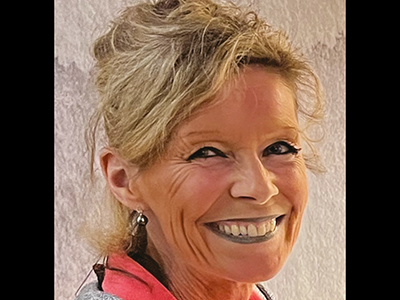
Janne Blichert-Toft
Citation
Janne Blichert-Toft is a geochemist specializing in radiogenic isotopes and their applications to geochronology, planetary differentiation and, particularly, the evolution of the crust-mantle system of Earth. She is the acknowledged leader in geochemistry who advanced the measurement and application of the lutetium-hafnium (Lu-Hf) isotope system in geochemistry, cosmochemistry and planetary science and showed the enormous power of this isotope system to study the origin and evolution of planetary bodies, including Earth. Janne’s enthusiasm for research; her creativity to study geological processes recorded in rocks, minerals and fluids; and her energy and patience to advance analytical methods have made her a globally recognized expert in geochemistry and chemical geodynamics. Her main research approach includes the development and subsequent use of high-precision isotope measurements to reconstruct the origin of planetesimals and planets and, foremost, Earth’s evolution. Janne has developed key techniques for high-precision isotopic measurements, in particular by plasma source mass spectrometry. After developing and improving this significant new tool, she immediately realized the exceptional suitability of the Lu-Hf isotope system to advance our understanding of the formation of planets and their subsequent evolution, particularly, its power for revealing the dynamic geochemical processes in the silicate Earth through time as expressed through plate tectonics. Current models for the evolution of the crust-mantle system are heavily based on her research. It is to her credit that Lu-Hf became the key isotope system now used routinely and dominantly as a tracer of crustal growth and recycling. In addition to Hf isotopes, she has applied multiple radioisotope systems to geoscientific questions, particularly uranium-lead and samarium-neodymium. She used these systems for an enormous diversity of research topics, ranging from dating the formation of rocky bodies in the solar system to mineral growth in metamorphic rocks, formation of oil and the reconstruction of the paths of metals over human history. Many of her papers are seminal in the true sense of the word, as they initiated new research opportunities and directions and enormously influenced the path of geochemistry and cosmochemistry in the last two decades. These innovative and original scientific contributions made her an acknowledged authority in geochemistry who advanced the field significantly and made her one of the top-cited geochemists. Based on her far-reaching and prolific, deep and broad scientific achievements and her service to the science community, she is undoubtedly a worthy and deserving recipient of the Harry H. Hess Medal. — Klaus Mezger Universität Bern Bern, Switzerland
Response
Madam President of AGU Susan Lozier, Members and Fellows of AGU, Colleagues, Friends, Family, Ladies and Gentlemen. Thank you, Klaus, for your kind and generous words, which touch me deeply. It is with great pleasure and pride that I receive the 2022 Harry H. Hess Medal from the American Geophysical Union. I am deeply honored and moved and profoundly humbled to join the ranks of the impressive list of distinguished past recipients of this award, many of whom have been my scientific role models since I was a student and have influenced me greatly. I am overwhelmed by the decades of groundbreaking science that the Hess Medal recognizes and how, by way of this reward, I am now linked to the preeminent Harry Hess of plate tectonic revolution fame known to every geologist. Moreover, AGU was the first professional society I joined 35 years ago, while still an undergraduate student, and Fall AGU was the first international conference I attended and where I, in an utterly nervous state, gave my first oral presentation, so it is very special, symbolic and meaningful to me to be honored today by AGU, especially as a European woman. I would like to thank AGU; the Hess Medal Committee members; my nominators; my employer, the CNRS (Centre National de la Recherche Scientifique), for daring what, at the time, seemed a great leap to hire me in France; my host institution, the École Normale Supérieure de Lyon, for having stood by me ever since; my second home, Rice University, for having adopted me into their Earth and planetary science family; my kind, generous, talented and brilliant students, who never cease to amaze, awe and inspire me by their achievements, creativity, intelligence and scientific rigor; our outstanding technical staff; and my wonderful colleagues and collaborators worldwide, many of whom have become close friends over the years. I would not be the scientist I am today without all of you. Lastly, I am forever grateful to my husband and my parents, without whose wisdom, integrity and boundless love and support I would not have made it this far intact because, as we all know, being successful in academia is a tough challenge at many levels, and not only for women…not anymore. Thank you, Madam President, thank you, AGU, thank you all again so very much for this exquisite and unique honor! — Janne Blichert-Toft École Normale Supérieure de Lyon and CNRS Lyon, France

Peter B Kelemen
Citation
Peter Kelemen has integrated geologicobservations with geochemistry, geophysics, thermodynamics and continuum mechanics to reveal unexpected links between the dynamics and evolution of Earth’s crust and upper mantle and unveil a geological solution to carbon sequestration.
Kelemen’s discoveries are sparked by geologic observations. Early on, dunites caught his eye. He saw them as channels through which large volumes of melt had flowed — and reacted. With a quantitative understanding of how they form, he and his colleagues discovered that the formation of melt channels could explain the composition of mid-ocean ridge basalts, the interpretation of U-series disequilibria and strain localization in the mantle. Kelemen’s ideas regarding melt-rock reaction also provided a possible explanation for why the continental crust is andesitic while most primitive melts are basaltic. While melt-rock reaction is a viable hypothesis for the genesis of some continental rock formed at arcs, he realized that the spectrum of crustal formation mechanisms must include those involving primitive basalts. This led him and his colleagues to explore the role of convective instability of lower crust and diapiric upwelling from slabs. His calculations inspired the community to pursue new field work, geochemical analyses and thermodynamic calculations. He took a similar path to invoke a novel model for the formation of oceanic crust at fast spreading centers, inspired by observations of “sill-like” gabbro layers in the Oman ophiolite. He demonstrated that these sills are geochemically isolated, which led to the bold hypothesis that the entire lower crust formed by the injection of sills. Crustal genesis by sill formation remains a leading hypothesis, largely as a result of Kelemen’s innovative work integrating geophysics, thermomechanical models, fabric analyses and cooling rates.
While in Oman, Kelemen became fascinated by remarkable structures in sets of carbonate veins. These observations motivated a multidisciplinary analysis of the carbonation process and an assessment of how much carbon dioxide (CO2) the ophiolite sucks out of the atmosphere today; he realized that with a bit of geoengineering, ophiolite bodies around the world could provide a meaningful CO2 sink.
A hallmark of Kelemen’s work is how he integrates ideas from a broad range of fields, guided by his keen geologic intuition, to relentlessly investigate problems in Earth science. A second hallmark, a willingness to take scientific risks, shows how science can progress in more than incremental steps; as an exemplary recipient of the 2021 Hess Medal, he would make Hess proud.
— Greg Hirth
Brown University
Providence, Rhode Island
— Peter Molnar
University of Colorado Boulder
Boulder, Colorado
Response
I thank Greg Hirth and Peter Molnar for their generous words. Honorees always say they couldn’t have succeeded without help. I don’t like predictable phrases, but this is particularly true in my case. I never had the training to address many problems we investigated, I forgot most of the training I had, and I only arrived here because friends were willing to indulge my naive insistence that “there must be a way to make this work” and then help me find it.
Driven by vague ideas about the origin of continental crust, I stumbled into fantastic training in petrology from Bernard Evans and Stu McCallum. I was doubly lucky to find Mark Ghiorso, who had the tools to quantify melt/rock reaction. Jack Whitehead was a role model for understanding feedback in geodynamics and the courage to take simple approaches to complex problems. Greg Hirth was my “second Ph.D. adviser,” teaching me all I know about rock mechanics. We set out to understand melt transport, then viscous earthquakes, shouting back and forth through the ceiling of adjacent offices. My shouts were questions. Greg’s were answers. Marc Spielgelman brought our notions to life in numerical models. Students and postdocs, especially EinatAharonov, Jun Korenaga, Stefan Bernstein, Karen Hanghøj, Matthew Jull, Mark Behn, Lisa Falk, Juan Carlos de Obeso, Noah McQueen, Jill VanTongeren and James Leong, made exceptional, original contributions. Stan Hart and Al Hofmann were generous mentors, Brad Hacker and Craig Manning, supercollaborators.
Long ago, freaked out by predicted resource crises, I asked Half Zantop at Dartmouth what to do. He replied, “Focus on geology. Maybe, when you’re 50, you can have a broader impact.” That’s kind of what happened. Years of basic geoscience yielded tools for applied research. The Endless Frontier meets Limits to Growth. As Dihedral Exploration, Geoff Radford and I did “extreme-terrain mineral exploration,” taking big risks for low pay in projects that transcended the notion of a job. I still feel our research is more important than our jobs. Moreover, mineral exploration does not take no for an answer. If you can’t find it here, look over there. . . . There must be a way to make this work.
Stepping back, I thank Rachel Cox. Along the way, there’s been too much deferred gratification, especially for Rachel. It’s been fantastic, and the climate crisis looms, but it’s time for us to slow down and enjoy each day together.
— Peter B. Kelemen
Columbia University
New York, New York
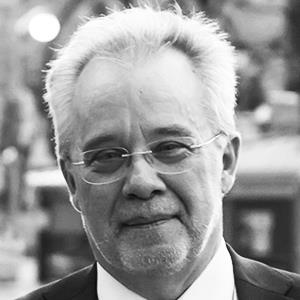
Donald B Dingwell
Citation
For inspirational leadership in magma physics and rheology via unique, innovative experimentation designed to inform on magmatic/volcanic processes.
Field Photos
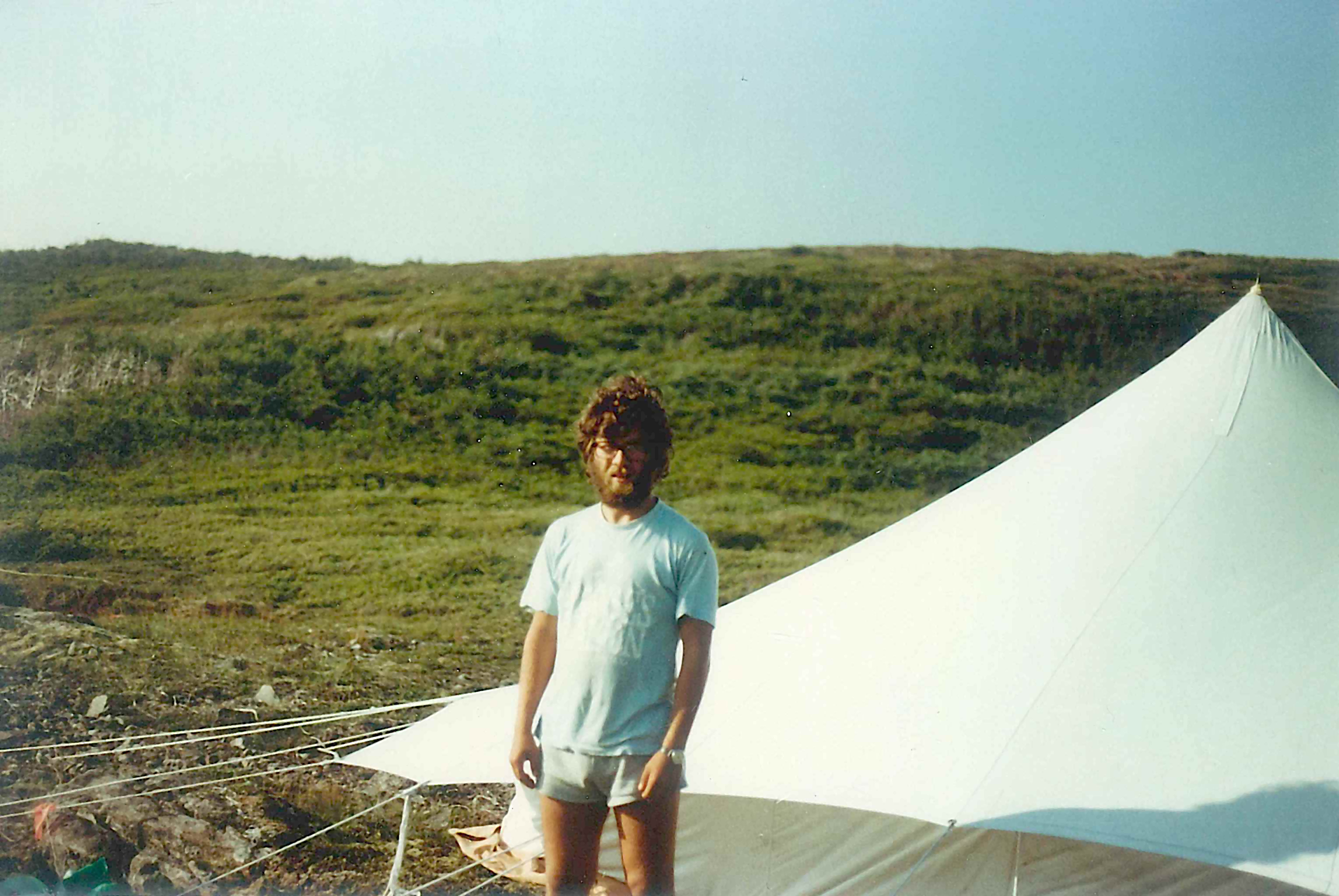
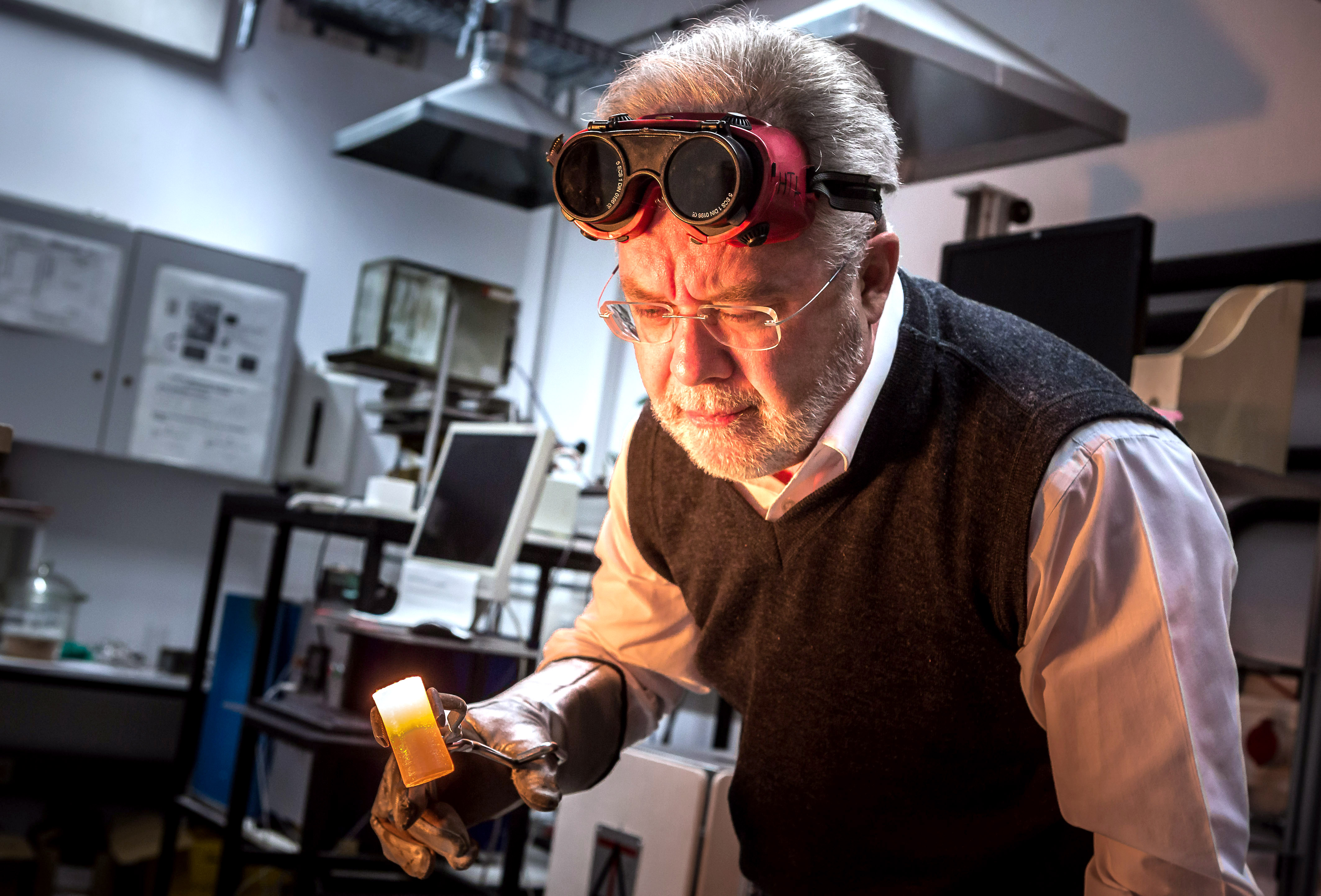
Video
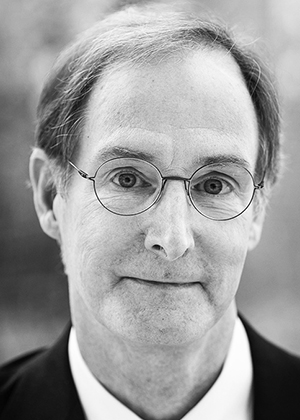
Richard J Walker
Richard J. Walker was awarded the 2019 Harry H. Hess Medal at AGU’s Fall Meeting 2019 Honors Ceremony, held on 11 December 2019 in San Francisco, Calif. The medal is for “outstanding achievements in research on the constitution and evolution of the Earth and other planets.”
Citation
Richard J. Walker is the world leader in the field of highly siderophile (or iron-loving) element geochemistry. While this may sound rather esoteric, the impact of Walker’s geochemical and cosmochemical research has changed how we look at Earth’s history, both from the outside in and from the inside out. He developed the rhenium-osmium isotopic method to map—for the first time—the age and evolution of the lithospheric mantle and its domains. Using the same isotopic tool kit, he was able to elucidate the planet’s late accretionary history and was among the first to demonstrate that asteroidal cores, sampled by some iron meteorites, formed very early in solar system history. He further pioneered the use of the platinum-osmium isotope system to test models of Earth’s core-mantle interaction and to refine core crystallization histories of iron meteorite parent bodies. Walker’s group pioneered measurements of tungsten isotope anomalies in early Earth rocks and mantle-derived magmas, demonstrating that primordial materials—formed in the first 50 million years of solar system history—astonishingly survived inside Earth for billions of years and are tapped now by mantle plumes rising from great depths. His group’s most recent discovery that the amount of isotopically anomalous tungsten correlates with that of primordial helium in “hot spot” volcanoes from Hawaii and Iceland has lit the field on fire. This observation implies that primordial materials that formed the first tens of millions of years after initial accretion of the planet remain today sequestered at or near the core-mantle boundary. This research, which requires cutting-edge, high-precision isotope ratio measurements, is a game changer and may reflect diffusive exchange between the deep mantle and the core.
Rich Walker’s impact goes well beyond these scientific discoveries, as he has been an excellent educator and mentor to a myriad of graduate students and postdoctoral scholars, most of whom have gone on to establish themselves in academia, thus representing the next generation of “siderophiles.” Finally, he has devoted significant time, energy, and resources to the University of Maryland (his academic home for the past 30 years), where he is currently the chair of the Department of Geology. Walker has fittingly served as the core of the geochemical community at Maryland, where he has been instrumental in accreting world-class colleagues to the institution, thereby making Maryland a bright center of the geochemical and cosmochemical universe.
For these stellar achievements, we honor Richard J. Walker with the 2019 Harry H. Hess Medal of AGU.
—Alan Jay Kaufman, University of Maryland, College Park; and Roberta L. Rudnick, University of California, Santa Barbara
Response
I’d like to start off by thanking those persons who nominated and selected me for this great award. I am much humbled by this recognition, but I sure do appreciate it! I also want to acknowledge the contributions of numerous postdocs and students, as well as other colleagues at the University of Maryland and beyond. I am fortunate to have worked with a dazzling array of accomplished individuals over the years. All that has been accomplished in my lab has been a result of a team effort. I am not permitted enough words or time to thank everyone individually here, so I offer a blanket, heartfelt thanks!
Perhaps the real stars of this show are the siderophile elements. I am grateful to V. M. Goldschmidt for placing these elements in their own special geochemical category. Due to the difficulties associated with measuring many of these elements, they were somewhat neglected during the first few decades of “modern geochemistry.” During that period, only a few brave souls, such as my early mentor John Morgan, sought to lay the critical groundwork for these elements and map out many of the applications we are pursuing today. The siderophile elements are now a fertile ground for much contemporary geochemical and cosmochemical research.
I began work on two siderophile elements, rhenium and osmium, while a postdoc in the mid-1980s. At the time, there were few data published for the associated isotope system, so exploring it seemed like a good thing to do. Studies involving the system are now quite common, and it is applied to a much wider range of problems than we ever envisioned in the 1980s. Accompanied by improvements to chemical separation techniques and mass spectrometers, my group has grown our list of favorite siderophile elements to include tungsten, ruthenium, and molybdenum. These elements are especially interesting because of their participation in short-lived radioactive decay systems and because their nucleosynthetic variability allows their use in tracing planetary genetics. The future is bright, as there is much yet to be learned from this group of elements.
To end I would like to acknowledge and especially thank my wife, Mary Horan. Much of the research I have been involved with over the decades has been supplemented by data provided by her, all the while many of our dinner conversations have strayed into discussions of arcane geochemical issues. Much of what I’ve accomplished would not have been possible without her contributions.
Thanks again to all!
—Richard J. Walker, University of Maryland, College Park
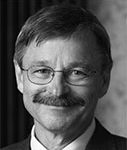
Timothy L Grove
Timothy L. Grove was awarded the 2018 Harry H. Hess Medal at the AGU Fall Meeting Honors Ceremony held on 12 December 2018 in Washington, D. C. The medal is for “outstanding achievements in research on the constitution and evolution of the Earth and other planets.”
Citation
The formation of igneous rocks is the fundamental process of planetary differentiation. Tim Grove is one of the world’s experts in igneous petrogenesis, having used a unique blend of fieldwork and laboratory experiments to make several key conceptual breakthroughs about the Earth and extraterrestrial bodies.
Mid-ocean ridge basalt (MORB), formed at divergent plate boundaries, is the most voluminous volcanic rock type on Earth. Tim experimentally mapped out the compositional space of MORB melts and developed a quantitative model that predicts the composition of magmas produced by mantle melting as a function of mantle composition, pressure, and temperature. This work showed that MORB compositions can be explained by low-degree melting over variable pressures and temperatures. This is perhaps the single most important body of experimental work in defining the nature of primary magmas of mid-ocean ridge magmatism.
Subduction zones constitute another major tectonic setting on Earth where magmas form. It has long been recognized that the compositions of most igneous rocks formed at convergent plate boundaries define a “calc-alkaline” trend, characterized by increasing alkali content without iron enrichment. Guided by fieldwork and phase equilibrium experiments, Tim showed that the calc-alkaline trend can be explained by the presence of magmatic water. This work serves as a foundation of our modern understanding of the role of water in the evolution of subduction zone magmas. Tim extended his knowledge of modern subduction zone processes to the Archean, showing that komatiite magmas were produced by hydrous melting in a subduction environment.
Tim has also made major contributions to our understanding of petrogenesis on the Moon and asteroids. He demonstrated that Apollo mare basalts were simple extrusions without extensive episodes of ponding on the lunar surface. His studies of lunar mafic glasses showed that the lunar mantle is compositionally heterogeneous, consistent with it being a frozen relic of the ancient magma ocean. He also showed that different meteorite classes can be related to one another by igneous differentiation processes and that these rocks sample different zones of differentiated planetesimals.
On top of his outstanding research achievements, Tim has an exceptional record of service, including as AGU president when he oversaw significant changes in AGU’s governance structure. Tim’s legacy continues beyond his own research through his education of a large number of extraordinary students who are successful and influential scientists in their own right.
—Benjamin P. Weiss and Oliver E. Jagoutz, Massachusetts Institute of Technology, Cambridge
Response
I feel very honored to be receiving the Hess Medal. The citation is almost exclusively about scientific accomplishments, and I would like to take some time to talk about how all that science happened. One of the most rewarding things for me has been working with many graduate students, postdocs, and collaborators as together we have moved science forward. I have always thought that mentoring and training the next generation of scientists is one of my primary responsibilities. I am very proud of you all and feel that you are also an important part of my work and that we all share this award.
And there is a Harry Hess connection that relates to mentoring. Harry Hess was one of my first scientific heroes. In 1970 at University of Colorado Boulder, we went on a field trip to the Stillwater layered igneous complex in Montana. I asked my professor/mentor, Bill Braddock (Princeton, Ph.D., 1959), if there was something I could read before the trip. He replied, Hess’s 1960 memoir. So I did, and I saw the remarkable breadth of approach that Hess had taken. Hess tied together excellent field observations with careful characterization of mineralogy and petrology to tell an amazing story of the crystallization processes that led to the development of this layered series. In it, Hess discussed phase equilibria of the pyroxene minerals, compositional evolution of the crystallizing melts, and the fluid dynamics of magma chamber processes.
In 1971 I went to graduate school at Harvard, where we studied lunar samples newly returned by the Apollo missions that Harry Hess helped to plan. Then it was off to a postdoc at Stony Brook, where Don Lindsley (Princeton, AB, 1956, who worked for Harry) taught me everything he knew about experimental petrology. Next was a job as a professor at the Massachusetts Institute of Technology/Woods Hole Oceanographic Institution, where we studied the processes that led to the formation of the rocks on the ocean floor, an area where Hess was a pioneer.
Hess inspired new thinking in many areas of the Earth and planetary sciences, and he mentored outstanding geologists like Braddock and Lindsley, who, in turn, mentored me.
In closing, it has also been deeply satisfying to help AGU move into a new era of governance and engagement with society. Also, I have had incredible support from my wife and sons, Matthew and Michael, while I have embarked on my scientific adventures. Thanks to you all.
—Timothy L. Grove, Department of Earth, Atmospheric and Planetary Sciences, Massachusetts Institute of Technology, Cambridge

Roberta L Rudnick
Roberta Rudnick was awarded the 2017 Harry H. Hess Medal at the AGU Fall Meeting Honors Ceremony, held on 13 December 2017 in New Orleans, La. The medal is for “outstanding achievements in research on the constitution and evolution of the Earth and other planets.”
Citation
Earth’s crust is important to us because we happen to live on it. It also contains more than half of Earth’s internal heat production, as well as most of its potassium and phosphorus. Its formation has left the residual mantle in a dramatically different state. Thus, knowing its composition is critical to any understanding of how Earth’s interior works. Roberta Rudnick is the world’s leading authority on the composition of the continental crust and lithosphere. Toward this end, she integrated geophysical properties of the crust with a comprehensive array of geochemical data to elucidate the role of the lower crust, which is inaccessible to direct observation. Today, if one is looking for the best estimate of the average continental crust or of its upper or lower portions, the go-to papers are those of Roberta Rudnick and her coworkers David Fountain and Shan Gao. The continental crust is welded to a much more massive subcontinental lithosphere. To elucidate the origin and evolution of this lithosphere, Roberta has conducted definitive studies on lithospheric peridotite and eclogite xenoliths, concentrating on trace element and isotope systems.
During the past several years, she has also become a leader in using one of the new, often called unconventional tracers, namely, lithium isotopes, to study near-surface continental processes such as weathering and intracrustal fluid flow, as well as recycling of near-surface continental material into the mantle. With her graduate student Fang-Zhen Teng, she demonstrated unequivocally, through detailed field and analytical work on magmatic aureoles, that reactive transport causes kinetic isotope fractionation. This work has opened up a new area of research on using kinetic isotope fractionation to constrain the timescales of diffusive and advective geochemical processes.
Most recently, together with her postdoc Richard Gaschnig and student Ming Tang, she has tackled the thorny problems posed by the long-term chemical evolution of the crust. Ancient crust is sparsely exposed and affected by weathering alteration and is thus subject to serious sampling biases. Her group dealt with both problems by analyzing ancient glacial tills, rather than sampling water- or wind-transported sediments, and developing weathering-resistant chemical proxies to show that ancient continents were richer in Fe and Mg and contained less granitic material than today’s crust.
The Harry H. Hess Medal is intended to honor “outstanding achievements in research on the constitution and evolution of the Earth and other planets.” Roberta’s research scope and accomplishments fit that description perfectly.
—Albrecht W. Hofmann, Max Planck Institute for Chemistry, Mainz, Germany; also at Columbia University, New York
Response
I am deeply moved and humbled by this tremendous honor. Science is not an individual pursuit; it is a collaborative endeavor, whether it be from “standing on the shoulders of giants” per Sir Isaac or through joint ventures with students and fellow scientists. That is why it is just a little embarrassing to stand here as an individual to be honored for accomplishments that reflect the work of so many. For over 3 decades, Bill McDonough and I collaborated on a wide variety of projects from the crust to the mantle and had many debates (yes, zirconium can and does fractionate from hafnium—I think I won a bottle of red on that one). The late Gao Shan, China University of Geosciences, Wuhan, who died far too early, was one of the most creative and inspiring scientists I have worked with. Together we explored the unusual happenings of the North China Craton, which introduced me to a fascinating part of the world and opened the door to many other collaborations. I feel that Shan’s enormous contributions were never adequately celebrated, and I hope that I can share this award with him posthumously.
I have been fortunate to have worked with incredible students from whom I learned more than I taught. There is nothing more satisfying than to see your students go on to achieve at the highest levels: Cin-Ty Lee, Fang-Zhen Teng, Jingao Liu, Xiaoming Liu (no relation), and Ming Tang, among others, keep me in awe of their intelligence, creativity, and overall kind spirits. They have become part of my extended family. I, in turn, benefited from mentoring from quite a few folks: Ross Taylor and Scott McLennan at Australian National University introduced me to the fascinating debate about continental crustal evolution and the use of sedimentary rocks to read the record of ancient Earth. Steve Goldstein, Al Hofmann, and the late Ted Ringwood all served as important mentors post-Ph.D. I’ve had the good fortune to work in collaborative and supportive departments at the University of Maryland and now at the University of California, Santa Barbara.
Finally, my family has supported me every step of the way: my brother Mike and sister Linda are here tonight with their families; my 95-year-old mother (Janet Rudnick) could not make it but continues to be an inspiration. My son, Patrick McDonough, is one of the finest humans I know. I thank you all, and those whom time does not permit me to mention by name, from the bottom of my heart.
—Roberta Rudnick, University of California, Santa Barbara
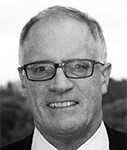
Alexander Halliday
Alex Halliday was awarded the 2016 Harry H. Hess Medal at the AGU Fall Meeting Honors Ceremony, held on 14 December 2016 in San Francisco, Calif. The medal is for “outstanding achievements in research on the constitution and evolution of the Earth and other planets.”
Citation
Alex Halliday is a pioneer in the application of isotopic techniques in geochemistry. The past few decades have seen remarkable developments that constrain the timing and nature of events in the early history of the solar system, and Alex has been one of the principal leaders in this effort. His wide-ranging efforts have also contributed to our understanding of weathering, paleoclimatology, mantle geochemistry, and basalt and granite petrogenesis.
Leadership can come from pioneering new measurements and from putting together a story. Alex has done both. He was a major player in the development and use of multicollector inductively coupled plasma mass spectrometry (ICPMS) for isotope geochemistry. Most significant, working with Der-Chuen Lee, he recognized and developed use of the hafnium-tungsten system. This made it possible to say something about the timing of core formation, a centrally important process in planetary formation and evolution. The relevant half-life, 9 million years, is conveniently similar to the timescale of planet and core formation, and the measurement can be done to sufficient precision to see the small amount that results from decays after multiple half-lives. In proposing the big picture, Alex sought to place his results in the context of our evolving view of how planets (and Earth in particular) formed. Core formation is contemporaneous with accretion, with some (perhaps most) taking place in the first few million years, but with a substantial tail extending out to as much as 100 million years. Alex placed his results in the context of the giant impact, the prevailing view of lunar formation. He named the impactor Theia. This singular event and its isotopic consequences are widely accepted, although several aspects remain imperfectly understood. The story embraces Earth formation, the origin of the Moon, the relative timing of Mars, and the context provided by meteorites.
Alex also led the way with high-precision silicon isotope measurements; these have had multiple applications, including the isotopic similarity of Earth and the Moon. Alex has made other important contributions, including influential earlier work that interprets the incompatible trace elements in oceanic island basalt and mid-ocean ridge basalt. He has had many successful students, and he has also contributed great service to the scientific community, including leadership at Oxford and the Royal Society of London, and as a section president (Volcanology, Geochemistry and Petrology) at AGU. He is an outstanding recipient of the Hess Medal.
—David Stevenson, California Institute of Technology, Pasadena
Response
I should start by thanking Dave and others who were involved in my nomination, and AGU, for this great honor.
The Hess Medal is not special just because of the previous recipients and the science it recognizes. Hess himself was special. Ron Oxburgh, a former Hess student, who opened my labs in Michigan, describes him as one of the most relaxed, courteous, and considerate heads of department ever. He was highly entrepreneurial. Apparently, during World War II he commanded a troop transporter in the Pacific and, while under fire, the devoted coxswains of the landing craft would leap out of the boat and grab rocks for him! He also left his echo-sounder running continuously, which was not “normal” but facilitated the modern bathymetric chart of the Pacific, delineating deep ocean trenches associated with subduction.
My Ph.D. had little to do with deep planetary interiors. However, at Newcastle I got to hear talks by several big thinkers in the field, such as a younger Dave Stevenson. It was later, at Scottish Universities Research and Reactor Centre and then at the University of Michigan, that I was able to pursue my fascination first with the deep Earth and then cosmochemistry. Like Hess, I have had excellent postdocs and students including Der-Chuen Lee mentioned by Dave, but also many others. There is one in particular I should mention who helped me get started at Michigan; Jon Davidson is being made an AGU Fellow this year but sadly died of leukemia at the end of September. Jon, like Hess, was an inspiration to many.
In the spirit of Hess, isotope geochemistry has benefited from innovative approaches to big problems like the origins of the Earth and Moon. When I saw the prototype MC-ICPMS it was clear what it could achieve, but it has required the support of program directors and university leaders at Michigan, ETH, and Oxford. As we developed tungsten and other systems, and explored new archives, there were also many supportive colleagues such as Claude Allègre, Keith O’Nions, and the late Jerry Wasserburg. We have all had the privilege of working at times of great scientific discoveries. It’s brilliant. However, my biggest thank you has to be to Christine and our boys, Jamie and Ross, who have put up with a busy Alex and three major relocations while I have fun being paid to do something I love.
Thank you all so much.
—Alex Halliday, University of Oxford, U.K.
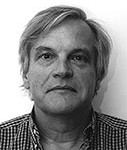
Claude P Jaupart
Claude Jaupart was awarded the 2015 Harry H. Hess Medal at the AGU Fall Meeting Honors Ceremony, held on 16 December 2015 in San Francisco, Calif. The medal is for “outstanding achievements in research on the constitution and evolution of the Earth and other planets.”
Citation
Claude Jaupart has made major contributions to several areas of solid Earth science. His contributions include understanding the physics of volcanic eruptions, igneous processes in magma chambers and intrusions, geodynamics, in particular related to mantle convection and the role of continents, and heat flow in the Earth. His work ranges from geophysical fluid dynamics to behavior of elastic materials to heat transport problems.
Claude’s contributions to volcanology and magma physics have been exceptional. His research includes elucidating how stress fields control dike emplacement; insights into crystallization of magmas, magma convection, conduit flows, degassing dynamics of magma chambers and eruptions, formation of layered intrusions, development of overpressures in magma chambers, formation of magma chambers, evolution of lava lakes, and the rheological behavior of bubbly magmas; and understanding of magma fragmentation. A seminal contribution concerns the thermal and dynamical behavior of the Earth including heat flow measurements on continents, radioactivity within the continental crust and lithosphere, interpretation of heat flow measurements on continents and oceans, convection in the mantle, and viscous melts and lava flows. Claude has had a career-long commitment to measuring the heat flow through the Canadian cratons. His discovery of low mantle heat flux is one of the most important pieces of observational work on the continents.
Claude’s research is characterized by a highly rigorous quantitative approach to science. He sees understanding observations and data as the key rationale for modeling, experimentation, and analysis. All of his research places observations and data at the forefront, even in his more theoretical endeavors. Claude adopts a holistic approach combining elegant laboratory experiments, astute development of theoretical models, and a deep knowledge and respect for observations. His primary motivation is to understand the natural world through his deep knowledge of the underlying physics. He is technically outstanding, applying rigorous mathematics to his modeling and analysis of data. He has tremendous creative ability to think of the right clever experiment or insightful development of a model and a flair for identifying the right questions and key issues.
Claude is widely known for being kind, courteous, generous with his time, and insightful of colleagues. He has nurtured several outstanding graduate students, many of whom are independently making significant contributions. He has provided leadership of French geoscience and is Institut de Physique du Globe de Paris director for the second term. Claude Jaupart is an outstanding recipient of the Hess Medal because of the breadth, depth, and quality of his scientific contributions.
—Stephen Sparks, University of Bristol, Bristol, United Kingdom
Response
The American Geophysical Union, the Hess Medal, and Steve Sparks are all so prestigious that I have been inflated to the bursting point. This medal carries special significance because of Harry Hess’s considerable achievements and breadth of research. I have spent countless hours poring over his landmark papers on seafloor spreading and on the Stillwater complex. His studies typify what is so exciting about our science, the intimate connections between the compositions of minerals and rocks, geological activity, and the deep churning of our planet. It is a great privilege to be associated with him.
My scientific development has been due to the energetic push and inspiration from a few remarkable scientists. It all began when I joined John Sclater’s group at the Massachusetts Institute of Technology, where the level of scholarship and enthusiasm was intoxicating. John kept his group on a permanent high with his constant support for new ideas and emphasis on the large-scale picture. I moved back to France at Claude Allègre’s urging to develop research on the physics of magmatic and volcanic processes at Institut de Physique du Globe de Paris. Claude provided far-field scientific vision and fought hard for what was then a burgeoning field. I met Steve Sparks and Herbert Huppert at almost the same time. Their groundbreaking studies of magmatic and volcanic processes had been eye-openers and have remained a constant source of inspiration. A fantastic field trip to Santorini volcano and a wonderful stint at the University of Bristol in their company solidified my resolve. I also had the good fortune to forge a lasting partnership with Jean-Claude Mareschal. We embarked on a 3-decades-long heat flow program that yielded an exceptional data set and powerful constraints on the thermal structure and evolution of continents. None of these would have happened without Jean-Claude, his nimble mathematics, his steadfastness and unselfishness, not to mention his encyclopedic knowledge of jazz music that kept us alert when we were logging deep boreholes.
The natural world has so many wonders to offer in so many different guises that exciting research topics abound. Definitive answers have rarely come from a single scientific discipline, but it is clear that the development of geological fluid dynamics has had a profound impact. I have been very fortunate to see this happening and am deeply grateful to AGU and to the many friends and colleagues who made this possible.
—Claude Jaupart, Institut de Physique du Globe de Paris and Université Paris-Diderot, Paris, France
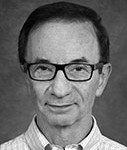
Donald J DePaolo
Donald J. DePaolo was awarded the 2014 Harry H. Hess Medal at the AGU Fall Meeting Honors Ceremony, held on 17 December 2014 in San Francisco, Calif. The medal is for “outstanding achievements in research on the constitution and evolution of Earth and other planets.”
Citation
To convey how richly Don DePaolo deserves the Hess Medal as recognition of his many significant contributions to the Earth sciences, I will use a recent, possibly apocryphal, story.
An officer of a distinguished scientific society enters a bar in North Tonawanda, New York, and asks the bartender, who is regarded as infallible by all patrons, how to recognize a great geochemist. The bartender replies, “You give him or her a prestigious award.” The officer of the society says, “No, no—I meant how does one know who is a truly great geochemist?” The reply to this was “it just takes four things. First, you need to find someone who has played a major role in developing new geochemical tools as Don DePaolo did with the neodymium-samarium system. Second, the new approach needs to have been effective at solving important geological problems. For examples of this you should read DePaolo’s classic monograph Neodymium Isotope Geochemistry. Third, a great geochemist will have developed powerful conceptual models such as those in DePaolo’s paper “Trace Element and Isotopic Effects of Combined Wallrock Assimilation and Fractional Crystallization,” which are now so widely used that one forgets where they came from.”
The high-ranking officer, thinking the issue resolved, runs out of the bar without waiting to hear the fourth key attribute. But a nagging thought creeps in—might there not be some bias in the bartender’s testimony given that the bar is in North Tonawanda and Don DePaolo is originally from North Tonawanda? At this point further testimonials from a number of leading Earth scientists are solicited, and the remarkable outcome is that although they were unanimous in their affection and admiration for DePaolo, each used different topics as examples of his impact across the full range of the Earth sciences. He was praised for his contributions to igneous, metamorphic, and sedimentary petrology; for developing the method for determining crustal mantle separation age; and for work on the chemical evolution of seawater and low-temperature processes during calcite precipitation.
Had the high-ranking officer stayed in the bar a bit longer, the fourth key attribute would have become clear: you need to be a great field geologist to bind the whole package together, and Don DePaolo is a perfect illustration of the importance of this trait. I’m sure I don’t have to tell you that the “an officer goes into a bar” story has a happy ending.
—Frank Richter, University of Chicago, Chicago, Ill.
Response
My thanks to the Hess Medal committee, friends, and colleagues who thought of me for this award and to AGU for continuing to provide this outstanding scientific venue. At my first AGU meeting in spring 1976 in Washington, D. C., I gave a presentation on a few neodymium isotopic analyses we had done at the California Institute of Technology (Caltech). I have not missed many meetings since. That work, with a few twists and
turns and a few other isotopes, led ultimately to my presence at this event.
It is gratifying to receive an award named for Harry H. Hess. Judging from his publications, he had many characteristics as a scientist that I admire. Although strongly attached to making measurements, he apparently was also unafraid to develop models from limited data and creatively follow the implications into uncharted territory! I discovered with a little digging that Hess and I have a few things in common. Hess started as an engineering major at an Ivy League school and switched to geology, he wrote papers on the Stillwater igneous complex, and he was a leader of the Mohole project. The last connection refers to the fact that the original proposal Ed Stolper, Don Thomas, and I submitted to the National Science Foundation (NSF) in 1986 for the Hawaii Scientific Drilling Project was for a deep core hole to penetrate the Moho under Hilo.
Not unusually, my career trajectory has involved a series of unlikely events. I am immensely pleased with where they led. The initial research direction and subsequent tendency toward directional variance were influenced by the mentorship and example of Jerry Wasserburg. Many years of friendship and collaboration with Frank Richter helped keep the fires lit. Not much would have been done without consistent and substantial research support from NSF and the U.S. Department of Energy and institutional support from the University of California (UC), Los Angeles; UC Berkeley; and the Lawrence Berkeley National Laboratory. My wife and partner for the last 30 years, Lynn Ingram, kept me balanced and almost centered while pursuing her own research.
Probably the best thing I did for science and myself over the years was recognize when colleagues were describing to me exceptionally good research ideas that deserved my attention. In this regard I will mention in particular Karl Turekian, John Rosenfeld, Joe Skulan, Ken Sims, Peter Zeitler, Mark Jellinek, Matt Fantle, and Kate Maher.
And one other thing…the bartender must have known me in another context.
—Donald J. DePaolo, University of California, Berkeley, Calif.
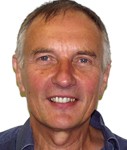
Bernard J Wood
Bernard J. Wood was awarded the 2013 Harry H. Hess Medal at the AGU Fall Meeting Honors Ceremony, held on 11 December 2013 in San Francisco, Calif. The medal is for “outstanding achievements in research on the constitution and evolution of Earth and other planets.”
Citation
As Harry Hess recognized over 50 years ago, mantle melting is the fundamental motor for planetary evolution and differentiation. Melting generates the major divisions of crust mantle and core. The distribution of chemical elements between solids, melts, and gaseous phases is fundamental to understanding these differentiation processes. Bernie Wood, together with Jon Blundy, has combined experimental petrology and physicochemical theory to revolutionize the understanding of the distribution of trace elements between melts and solids in the Earth. Knowledge of these distribution laws allows the reconstruction of the source compositions of the melts (deep in Earth’s interior) from their abundances in volcanic rocks. Bernie’s theoretical treatment relates the elastic strain of the lattice caused by the substitution of a trace element in a crystal to the ionic radius and charge of this element. This theory, and its experimental calibrations, brought order to a literature of badly scattered, rather chaotic experimental data that allowed no satisfactory quantitative modeling of melting processes in the mantle.
Recently, Bernie has expanded the scope of his work by adding partitioning on liquid metal-silicate equilibria and on mineral phases relevant to the lower mantle. Thus, Ca-perovskite, which hosts most of the calcium and aluminum in the lower mantle, partitions trace elements in a dramatically different fashion from what is seen in upper mantle minerals. The implications of this for the evolution of the deep mantle are potentially profound. These new studies offer a framework for understanding the melting processes that shaped the earliest evolution of the Earth, namely, core segregation and magma ocean formation and solidification.
Other major highlights to Bernie’s work include the classic 1986 paper of Bina and Wood showing that the 400-km seismic discontinuity in the mantle is a phase transition with thermodynamic properties such that the transition would not be smeared out by olivine solid solution and will therefore show up as a sharp discontinuity in seismic records. This work did much to lay to rest the need for a compositional boundary at that depth, at a time when there was still a heated debate over the nature of the major seismic discontinuities in the mantle.
Even earlier, Bernie became a leading authority in the petrology and thermodynamics of metamorphic reactions, especially their use as mineralogical thermobarometers. Thus, Wood and Banno’s geothermobarometer based on garnet-orthopyroxene-clinopyroxene relationships, published 40 years ago, is still widely used today.
Bernie’s love for thermodynamics resulted in the classic textbook Elementary Thermodynamics for Geologists by Wood and Fraser and three other books. He is one of the foremost petrologists of our time, one who has brought both theoretical and experimental petrology back to the forefront of Earth science. He has done this through his deep understanding of theory and experiment and their meaning for Earth processes and his leadership in merging petrology and geochemistry into a single discipline.
The Harry H. Hess Medal is an award designed to honor “outstanding achievements in research on the constitution and evolution of Earth and other planets.” This description fits Bernie like a glove.
—ALBRECHT W. HOFMANN, Max Planck Institute for Chemistry, Mainz, Germany
Response
President Finn, friends, and colleagues, I am truly delighted to accept the Hess Medal for 2013. It is difficult to express one’s feelings adequately on receipt of such a prestigious award, but a mixture of pride, humility, and thankfulness for a long and lucky career all occur. It did not start propitiously as my high school grades would only ensure undergraduate entry into the Northern Polytechnic, a second-tier institution in London. Nevertheless, I was enthused by several great teachers, including John Charalambous (inorganic chemistry) and Stephen Morel, a field geologist who had worked for many years in Malawi. They pushed me into trying for graduate school, and I was fortunate to find the eclectic Roger Strens my supervisor at Newcastle.
I finished my Ph.D. intrigued by the potential of combining thermodynamics with experiments to develop thermobarometers for peridotites and managed to get postdoc funding to do this in the experimental lab in Manchester. Later that year (1972), W. S. “Mac” Mackenzie called me into his Manchester office and told me he’d recommended me for a two-quarter position in Berkeley teaching metamorphic petrology. When I expressed doubts about my knowledge of metamorphism, he just said, “You only need to stay a week ahead of the students.” Fortunately for me, I went.
Berkeley in 1973 was an exhilarating place, buzzing with the aftermath of the anti–Vietnam War demonstrations and engrossed in the Watergate hearings. Ian Carmichael, who was chair, absorbed me into his group, and my education advanced rapidly during vigorous arguments with my office mate, Bruce Marsh, and with the occupants of Hal Helgeson’s “Prediction Central.” I returned to a faculty position in Manchester and was strongly supported to build an experimental program by my senior colleagues Jack Zussman and Mac.
In 1981 I moved to Northwestern and stayed for a very happy 8 years. Working next to a strong geophysics group and interacting with Seth Stein, I became interested in applying my thermodynamic and petrological knowledge to whole-Earth structure, particularly to seismic discontinuities and phase transitions. Sy Schlanger taught me the secrets of being an effective department chair. In addition, there was something about Northwestern that seemed to attract a range of interesting and talented graduate students, and they all helped to keep us on our toes.
In Bristol (1989) Steve Sparks and I worked closely on trying to build a high-quality department. Among others, we hired Jon Blundy, who collaborated successfully with me on trace element partitioning. I was again fortunate to work with a number of excellent graduate students, including the recent Macelwane awardee Dan Frost.
In the context of this award I should finish by mentioning an interview for a junior faculty job at Oxford in 1972. Ron Oxburgh asked how the direction of my “research would be influenced by plate tectonics.” I replied that I couldn’t think of any way it would be. I didn’t get the job! But I hope that Ron and Harry Hess would both think I’ve progressed since then.
Thank you all very much.
—BERNARD J. WOOD, University of Oxford, Oxford, UK

Maria T Zuber
Maria T. Zuber was awarded the 2012 Harry H. Hess Medal at the AGU Fall Meeting Honors Ceremony, held on 5 December 2012 in San Francisco, Calif. The medal is for “outstanding achievements in research on the constitution and evolution of Earth and other planets.”
Citation
For two decades, Maria Zuber – the E. A. Griswold Professor of Geophysics at the Massachusetts Institute of Technology – has led the geophysical exploration of the Moon, Mars, Mercury, and the asteroids. That she is AGU’s 2012 Harry H. Hess Medalist is because of her leadership of multiple spacecraft experiments and an entire mission; her rigorous analysis of the observations from those experiments to advance our understanding of the form, internal structure, and evolution of solar system objects; and her development of mathematical and numerical models of planetary deformational and interior dynamical processes.
Her principal tools have been laser altimetry and planetary gravity fields. Zuber led the analysis of laser ranging data from the lunar Clementine mission to produce the first global topographic map of the Moon. With that map, and a newly determined lunar gravity field, she produced the first global model of lunar crustal structure, which changed our understanding of the nature of isostatic compensation early in lunar history and elucidated for the first time the strongly aspherical nature of internal temperature and melt production in the lunar mantle. The Lunar Orbiter Laser Altimeter on the Lunar Reconnaissance Orbiter, an experiment for which Zuber is Deputy Principal Investigator, and the dual-spacecraft Gravity Recovery and Interior Laboratory mission, for which she is Principal Investigator, are now revolutionizing our understanding of the lunar topography and gravity fields, respectively, and their implications for lunar magmatism, tectonics, impact cratering, and interior differentiation and dynamics.
The Mars Orbiter Laser Altimeter on the Mars Global Surveyor spacecraft, an experiment for which Zuber served as Deputy Principal Investigator, produced the first high-resolution global topographic map of Mars and stimulated a new understanding of all phenomena that affect the Martian surface, from cratering and deformation, to volcanism and atmospheric circulation, to the erosional and depositional action of water and ice. From the first global map of crustal thickness on Mars, Zuber showed that the planet can be divided into two approximately hemispherical provinces, a southern province dominated by a progressive thinning of the crust from south to north and a northern province of uniformly thinner crust, key constraints on the planet’s differentiation and early impact history. Zuber’s group also determined the density and inferred ice content of the south polar layered deposits and documented that seasonal variations in polar topography correlate with variations in the planet’s gravitational oblateness and changes expected from models of atmospheric circulation and CO2 exchange.
Moreover, Zuber led the analysis of laser altimetry observations of Mercury made by the MESSENGER spacecraft that yielded the first maps of crustal thickness in Mercury’s northern hemisphere. She led the determination of the first detailed three-dimensional shape model for an asteroid (433 Eros) and determined that body’s mean density and porosity. She championed the idea that many tectonic features on the inner planets arise from instabilities in the lithosphere induced by in-plane or basal shear stress, and with this idea she inferred mechanical properties of the lithosphere in extensional and contractional regimes on Earth, Venus, and Mars.
–Sean C. Solomon, Lamont-Doherty Earth Observatory, Columbia University, Palisades, New York
Response
Thank you, Sean, and other colleagues who took the time to nominate me for this extraordinary honor. It is deeply meaningful to be recognized by the AGU, the primary scientific society in which I’ve participated throughout my career. The ever-expanding reach of AGU provides an outlet for our research much beyond our immediate field, important because, as I tell my students: “It doesn’t matter how good your work is if no one knows about it.”Viewing the list of distinguished past Hess recipients, many of whom have influenced me greatly, it is impossible to overstate how humbled I am.
I’ve always had a passion for studying space and I was just plain lucky to have been born at the dawn of the age of space exploration. When I was starting my career, data from robotic spacecraft revealed planetary surfaces that displayed tectonic patterns beyond imagination.In graduate school at Brown University, Marc Parmentier provided me with the guidance I needed to understand what some of these fascinating features could tell us about the internal structures and stress histories of these bodies.Subsequently, an NRC post doc at the Goddard Space Flight Center sent me in an exciting new direction. Long the go-to place for space geodetic measurements of tectonic motions and satellite-based models of Earth’s gravity field, Dave Smith and his group were beginning to look towards the planets. At the time I was impatient because I didn’t have the data I needed to test my models, and while at Goddard I came to realize that I myself could be part of the solution to that problem. By taking advantage of advances in military laser technology, we realized that we could build an altimeter with the requisite lifetime and performance to map planets. In parallel, we extended Goddard’s orbit determination capability to allow us to produce the first high-resolution planetary gravity fields. Our goal was to make great maps, and also to interpret them.Because we designed the experiments and performed the precise corrections to the measurements, we were well positioned to understand what we could conclude with confidence. Along with Dave Smith, Sean Solomon, Roger Phillips, Greg Neumann and many others, we applied this philosophy to Mars, Mercury, the Moon and several asteroids, and along the way we have learned a thing or two about how solid planetary bodies evolved.
The key to progress has always been collaboration. I have been fortunate to have scientific colleagues, post docs, and students who challenge me, outstanding analysts who bring the rigor of terrestrial geodesy to the planets, engineers who design, build, and operate the spacecraft and instruments that allow scientific dreams to be realized, and family who have always been there to support me. One of the joys of my life is assembling a group of like-minded people to pursue a lofty goal. I appreciate this medal so much because it is a celebration of the remarkable teams with whom I’ve been fortunate to work.
–Maria T. Zuber, Department of Earth, Atmospheric and Planetary Sciences, Massachusetts Institute of Technology, Cambridge, Massachusetts.
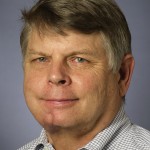
Henry J Dick
Henry J. B. Dick was awarded the 2011 Harry H. Hess Medal at the AGU Fall Meeting Honors Ceremony, held on 7 December 2011 in San Francisco, Calif. The medal is for “outstanding achievements in research on the constitution and evolution of Earth and other planets.”
Citation
The Harry H. Hess Medal recognizes “outstanding achievements in research in the constitution and evolution of Earth and other planets.” It is thus most appropriate that Henry Dick receive the 2011 AGU Hess Medal.
In his seafloor spreading hypothesis, Harry Hess thought the ocean crust as serpentines derived from hydration of the rising hot mantle at ocean ridges. While a basaltic ocean crust is now accepted, Henry advocates the role of serpentines as a crustal constituent. In fact, it is Henry’s painstaking studies of these serpentinized abyssal peridotites that have established our present-day understanding of the mantle melting and ocean crust formation at ocean ridges. It is fair to say that modern seafloor petrology, geochemistry, and tectonics would not be the same without Henry’s many discoveries, creative efforts, and deep insights.
Abyssal peridotites are mantle melting residues for mid-ocean ridge basalt (MORB), but this was unknown before Dick and Fisher (1984).
Dick, Fisher, and Bryan (1984) showed that abyssal peridotites from “hot-spot-influenced” shallow ridges are more depleted than those from “hot-spot-uninfluenced” deep ridges, and this varying degree of depletion correlates with the chemistry of spatially associated MORB. This discovery marked a turning point for seafloor petrology research. Henry recently suggested that some of these near-ridge “hot spots” may be inherited from chemically depleted and physically buoyant asthenosphere.
It seems straightforward that mantle melting occurs in the form of near-fractional melting, but this was not obvious before the trace element study on abyssal peridotite minerals by Henry and his students (Johnson, Dick, and Shimizu, 1990).
Melt-rock reaction is known to be important during melt ascent in the mantle, but Dick (1976) was the first to document the reactions in the Josephine harzburgite and has shown further that this process is also important for magmatism at crustal levels.
Dick and Bullen (1984) pioneered applying the compositions of spinels in peridotites and basalts as a petrogenetic indicator to fingerprint tectonic settings of rock formation. This technique remains effective and widely used today. Dick (1976) was also the first to use spinels in alpine and abyssal peridotites to estimate oxygen fugacity, a fundamental tool for understanding mantle evolution.
Henry made passionate efforts to understand the lithological structure of the ocean crust through seagoing investigations. He has achieved drilling into the Moho via “offset drilling” (Dick and others, 1991, 2000) and shown differences of lower crustal gabbros between slow and fast spreading ridges, and both differ from ophiolite complexes, questioning the paradigm of ophiolites as representing normal oceanic lithosphere.
Dick, Thompson, and Bryan (1981) correctly concluded the significance of low-angle normal faults in exposing mantle peridotites and lower crust gabbros at slow spreading ridges, fundamental to the discovery and understanding of oceanic core complexes.
Dick, Lin, and Schouten (2003) recognized the “ultraslow spreading class of ocean ridges” that differ from the familiar fast and slow spreading ridges and offer new challenges for understanding how ocean ridges work.
Henry has achieved all that Harry Hess left behind and has done much more. At the age of 65, Henry continues to lead our field and to solve major scientific problems while discovering new ones. Indeed, few scientists have the scientific spirit of Harry Hess the way Henry does. Henry is the unmatched seafloor petrologist of our time and is a scientific giant who has mentored many. His iconoclastic courage sets a good example for being an original researcher, and his enthusiasm continues to affect a new generation of young scientists with the wonder of our planet.
Mr. President, members of the committee, and the Union, it is my great pleasure to present Henry Dick to you as the Harry Hess medalist for 2011.
—Yaoling Niu, Durham University, Durham, UK
Response
Mr. President, members of the award committee, my colleagues, nominators, friends, and family, it is a great pleasure to accept the Harry H. Hess Medal. This medal means a great deal. My undergraduate advisor at the University of Pennsylvania, Reg Shagam, was a student of Harry Hess. Hess’s enthusiasm and excitement were uniquely transmitted to every student of his that I have ever met. He imbued them with remarkable passion for the Earth, and in turn they passed this on to their own students, and I am one of them.
First and foremost, Hess was a geologist and mineralogist who took field and mineralogical studies and wove “geopoetry” about our planet. Whether as a naval officer, mapping out the mid-ocean mountains during World War II, or as a Princeton professor trekking the hills in the Stillwater Complex in Montana, his work was based on hard data collected in the field by him and his students. The insights he gained changed the way we thought of and about our planet.
Hess turned our attention to the study of the ocean crust and helped inspire the Deep Sea Drilling Project and its successors, still today, after 40 years, arguably one of our most successful and important international scientific endeavors. Though many of its goals, such as full penetration of the ocean crust, are yet to be achieved, they can and will be obtained as long as we have the will. This leads me to the wonderful time I have had drilling and exploring the global ridge system, a task I took to heart from Bob Coleman’s challenge to a group of young students at the 1971 Penrose Ophiolite Conference. It has been a fascinating and rewarding endeavor, rich with opportunity. I have been the proverbial boy in the candy shop. There is so much out there to discover that I must modestly reflect on my career with the old phrase, “Even a blind hog, if he roots long enough under an acorn tree, will find a nut or two.”
Field geology often seems to be the stepchild of the Earth sciences: To paraphrase a famous comedian, “it don’t get no respect.” Yet in the oceans, whether dredging from a ship, operating a remotely operated vehicle, or gloriously diving in a submarine, it is arguably one of the most exciting spheres of our science. Mapping and sampling the ocean crust and analysis and study of the rocks and data acquired are enormously time-consuming and complex. Yet while they extend over three fifths of our planet, the oceans get a fraction of the resources of space exploration. Our efforts are extremely modest considering the scale of the project and its potential human impact. This is particularly true for the basic chore of geologically surveying the ocean crust. Geologists have been tramping around on land for hundreds of years mapping and sampling; what has been done beneath the waves is absurdly small.
Yet dramatic finds are being made in the little-explored regions of the global ridge system. Many of the great ocean rises are now found to have discontinuous thin crust, marking locations where the seafloor is rifting over the site of ancient mantle plumes. There is the startling discovery by a small group of us, notably including Mathilde Cannat and Daniel Sauter, that the crust is not a continuous shell around the Earth but is missing across large swaths of the ocean floor. The implications for tectonics and geochemical cycles are profound and directly challenge conventional wisdom and interpretations. This is a discovery that most certainly would please Hess, who first proposed that the ocean crust was serpentinized mantle rock.
In closing, I would like to comment that I do not have sole ownership of this medal. There are many colleagues who have contributed to the work, discoveries, and ideas for which it has been awarded, and each of them owns a piece of it. In particular, I would mention Charlie Langmuir: The two of us have squabbled endlessly over the years, but together we have pioneered techniques for using major element chemistry as a key to understanding the dynamics of the mantle and crustal accretion beneath the 60% of our planet covered by ocean, and neither of us would have gone far on this trip without the other. Both to him and to my numerous friends and colleagues who have also contributed so much: Thank you.
—Henry J. B. Dick, Woods Hole Oceanographic Institution, Woods Hole, Mass.
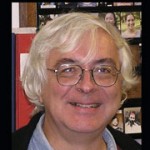
David Walker
David Walker was awarded the 2010 Harry H. Hess Medal at the AGU Fall Meeting Honors Ceremony, held on 15 December 2010 in San Francisco, Calif. The medal is for “outstanding achievements in research of the constitution and evolution of Earth and other planets.”
Citation
The Harry H. Hess Medal honors “outstanding achievements in research of the constitution and evolution of Earth and other planets.” I can think of no one who is more worthy of this honor than Dave Walker.
Dave’s early work at Harvard as a graduate student and research scientist documents the excitement of the Apollo program lunar sample returns. Even though he was just starting out at that time as a young scientist, Dave quickly became a key figure in the feverish competition between the world’s best experimental labs to piece together the story of the igneous differentiation of the Moon. Much of what we now take for granted about the formation of the lunar crust and mantle came out of the Harvard experimental petrology lab in the 1970s, clearly with Dave Walker’s intellectual stamp on it.
Dave’s interest in the physical mechanisms recorded in lunar igneous rocks led him into the realm of magma physics. An early example of his creative approach to problems in this area are his novel plagioclase flotation experiments, which provided confirmation that the low-density lunar anorthositic crust could have been formed by flotation on the lunar magma ocean. A few years later, as full professor at Columbia’s Lamont-Doherty Earth Observatory, Dave extended this idea to Earth differentiation but with an interesting and equally creative twist. He hypothesized that liquidus olivines would float in silicate melt, not at the Earth’s surface like plagioclase on the Moon but at high pressure through densification of the melt owing to its relatively high compressibility. Dave was also instrumental in elucidating the genesis and evolution of mid-ocean ridge basalts using phase equilibria and pseudoternary phase diagrams. His series of papers on this topic are some of the most cited papers in petrology and geochemistry. Dave is currently a leader in experimental studies of core formation, especially the partitioning of elements between silicates and metals both solid and liquid. His work along with others in the field has elucidated the siderophile element problem for the differentiation of the early Earth, as well as the reactions thought to exist at the core-mantle boundary.
Dave also played a central role in developing equipment to advance high-pressure techniques for the fields of experimental petrology and mineral physics. He made an incredibly clever adaptation of the original multianvil design, simplifying it so that it could be manufactured by any good machine shop at a small fraction of the cost of more complex, high-cost designs. As a result, the high-pressure device known now as the “Walker-type” multianvil has found its way into dozens of experimental petrology and mineral physics labs around the world, which has facilitated research by other experimentalists to understand the constitution and evolution of planetary interiors.
In summary, Dave Walker is a true leader in experimental petrology, both in designing and improving experimental equipment and in pioneering new ideas of the evolution of the Earth, Moon, and planets. His outstanding achievements are most deservingly recognized by the 2010 Harry H. Hess Medal.
—CARL B. AGEE, University of New Mexico, Albuquerque.
Response
I thank my nominators, Carl Agee and Youxue Zhang; my other supporters; and the AGU committees who brought me here. Mike O’Hara, a previous recipient of this medal and one of my heroes, asked these questions in his acceptance speech: Would life have evolved to its present state if each genetic experiment had required prior approval from six referees and a committee? Could Harry Hess have made his great contributions in today’s environment?
It is true, without an annoying review process, that Harry Hess used his World War II ship’s guyot-detecting pinger more than strictly necessary to move troops, but he had considerably less science support than we enjoy today.
Hess’s photo was in the Berkner room at the old Lunar and Planetary Institute adjacent to Johnson Space Center on NASA Road 1 in Houston—a room of memorable small conferences on lunar science and memorable parties. His picture was there because he was a latter-day Moses who, as an Apollo science committee chairman, guided us to, but sadly died on the threshold of, the promised land of lunar sample returns. He was a patriarch in the system of oversight committees and of generous support that built science into national efforts like World War II and Apollo. Mike and I can take our answer from this. Curiosity is a wonderful thing, but it doesn’t hurt to be curious in the context of important, inspirational national goals, which we should contribute to setting and achieving, as Harry Hess did.
I am grateful for the benefits I had from Hess’s Apollo committees. I am grateful for being part of the unique era of planetary exploration, plate tectonics, and mineral physics that illuminated planets. I am grateful to my friends and excellent collaborators, many of whom, like Carl and Youxue, started as my students, postdocs, or mentors. I am grateful to my family, who enabled my scientific activities. And, of course, my sponsors at the U.S. National Science Foundation (NSF), NASA, Department of Energy, Natural Environment Research Council (NERC), Columbia University, and Consortium for Materials Properties Research in Earth Sciences (COMPRES) share prominently in the recognition of this medal. Thank you all very much indeed.
—DAVID WALKER, Lamont-Doherty Earth Observatory and Department of Earth and Environmental Sciences, Columbia University, Palisades, N. Y.
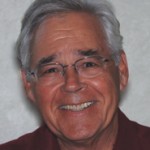
Frank M Richter
Frank M. Richter was awarded the 2009 Harry H. Hess Medal at the AGU Fall Meeting Honors Ceremony, held on 16 December 2009 in San Francisco, Calif. The medal is for “outstanding achievements in research in the constitution and evolution of Earth and other planets.”
Citation
The AGU Harry H. Hess Medal serves to highlight and honor “outstanding achievements in research of the constitution and evolution of Earth and sister planets.” There can be no doubt that Frank Richter’s research throughout his career clearly falls within this medal’s scope. Frank has made fundamental contributions to the Earth sciences through the application of simple but rich physical and chemical modeling and experimental investigations across a remarkably diverse spectrum of the geological sciences. Frank’s mode of research is to identify critical problems, develop a fundamental, first principles—based understanding, and then to delve deeply into the broader consequences and implications for the Earth sciences. This approach has characterized his work ranging from applying fluid dynamics to investigations of mantle dynamics and the driving forces of plate tectonics, mantle convection as it affects the thermal and chemical evolution of the mantle, mantle melting and melt segregation, diffusion-advection models for the Sr isotope evolution of deep-sea sediments and seawater, 40Ar/39Ar thermochronometry exploiting the multidomain diffusion of Ar in K-feldspar, compositional and isotopic effects of multicomponent diffusion during silicate melting, and more recently kinetic isotope fractionation by mass transport due to diffusion or evaporation. At each stage of his career, Frank’s research has contributed or defined the state of the art in each of these areas. Many of his papers are classics and are (or should be) required reading for anyone embarking on research in each of the areas that his research has touched upon.
Take a moment to reflect on the list of areas in which Frank has made seminal contributions. It is remarkable. His approach is to identify an Earth science—related problem where he can make a significant contribution, work single-mindedly until he succeeds to some satisfying degree, and then move on once he feels that further efforts would not yield results as significant as those he has already achieved. This mode of declaring success and moving on helps explain the remarkable diversity of his contributions, and the impossibility of classifying Frank as a fluid dynamicist, geodynamicist, geochemist, experimental petrologist, or cosmochemist. All of these apply and would characterize some phase in his career. These are not dalliances but are fully engaged intellectual pursuits to deeply understand some fundamental property of the natural world by developing mathematical models based on rigorous experimental and analytical approaches to better understand how physics and chemistry affect the evolution of natural systems. Frank is also a careful listener and reader, whose questions and input can often be transformative of the research of his friends and colleagues. I, for one, believe I am better scientist as a result of interactions with Frank over the years, and I am most grateful for his generosity and critical input.
—DAVID B. ROWLEY, University of Chicago, Chicago, Ill.
Response
For many reasons I am delighted to receive the Harry H. Hess Medal. First, I take it as an expression of affection and some measure of admiration by Dave Rowley and those who supported my nomination. Second, while I never met Harry Hess, he had a profound influence on my early research. My Ph.D. dissertation and my first published paper were both entitled “Dynamical models for seafloor spreading” which acknowledges Hess in that the term seafloor spreading is the commonly used reference to his seminal ideas regarding processes in the ocean basins. Another work that was important to my developing models for the driving mechanism of plate tectonics is the paper “Seismology and the new global tectonics,” by Isaacs, Oliver, and Sykes. This paper, which is not remembered as much as it should be, provided a very well argued synthesis that made it easy to imagine the role of the cold subducted lithosphere in driving plate motions.
Dave Rowley noted that I have changed the focus of my research more than a few times. These changes did not spring from some especially fertile imagination but in almost every case were in-spired by scientific collaboration with a mentor or a friend. I am grateful to Joe Pedlosky for introducing me to fluid dynamics and for his integrity and excellence in scientific research. Sometimes the new direction came from a challenge, as when Ed Stolper asked, “Frank, if you’re so smart, why don’t you explain uphill diffusion?” That question led to my continued interest in many aspects of diffusion, further inspired by collaborations with Bruce Watson and Yan Liang. Dan McKenzie got me involved with dynamical models of melt segregation. Don DePaolo introduced me to pore water chemistry and the chemical evolution of seawater. Mark Harrison encouraged Oscar Lovera and me to develop multidomain models for 40Ar/39Ar thermochronometry of feldspar minerals. Andy Davis is responsible for my interest in certain aspects of cosmochemistry. In almost every case the progression was from an abstractly posed question to a rewarding collaboration in which each of us brought something distinctive to the task of addressing that question.
I don’t want to leave you with the impression that I can’t at least sometimes change emphasis on my own. My shift to experimental petrology and building a lab with various sorts of furnaces was my own initiative. It came about because smoking was banned in our building at a time when I was never without a lit pipe in my mouth. I could not give up my cherished pipe, and the only solution was to change to a field where I could demand a fume hood. Experimental petrology was an obvious choice, and some of you may remember that for years I had a computer, a phone, and an ashtray inside the fume hood. I eventually did give up smoking, but it appears I gave up one addiction, smoking, for another, laboratory experiments.
This being San Francisco reminds me of another Harry—Dirty Harry—and his iconic phrase: “Go ahead, make my day.” You and AGU really have made my day, and for that I thank you very much.
—FRANK M. RICHTER, Department of Geophysical Sciences, University of Chicago, Chicago, Ill.
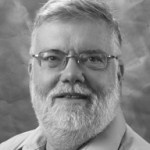
Henry Melosh
H. Jay Melosh was awarded the 2008 Harry H. Hess Medal at the AGU Fall Meeting Honors Ceremony, held 17 December 2008 in San Francisco, Calif. The medal is for “outstanding achievements in research in the constitution and evolution of Earth and sister planets.”
Citation
Jay is a world-class Earth and planetary scientist. He is responsible for a number of predictions, innovations, and contributions to our understanding of important phenomena in geophysics and planetary physics. Jay is the world’s expert on collisional/cratering processes in the solar system, processes that are perhaps the most important in shaping the planets and other bodies in space.
Jay is an extraordinarily original thinker. Most of Jay’s research in the Earth and planetary sciences has focused on the application of physical principles to the understanding of the forces that shape the surfaces of the Earth and other planets. One of his most original contributions is the process he has called “fluidization,” which is a unified explanation for the paradoxes surrounding the collapse of impact craters, the emplacement of long runout landslides, and the physics of earthquakes.
Jay participated in the analysis of geodetic motions in the Pacific Northwest and in 1983 concluded from these data that the region is not undergoing aseismic subduction, but is in an interseismic interval that must have followed a large prehistoric earthquake. Jay also proposed a viscous flow theory for the origin of the outer rise topography in subduction zones that cured many problems posed by the then current elastic flexure models. Although the community neglected this work for a few years, it was recently revived by Mike Gurnis and his students and is currently the accepted model for how topographic features arise in subduction zones.
Additional examples of Jay’s original thinking include the following:
In 1980 he predicted that meteor-strewn fields would be found on Venus with a characteristic dimension of 20 kilometers. This prediction was verified by Magellan in 1991.
In 1993 he predicted that the Shoemaker-Levy 9 fragments were only a few hundred meters in diameter. After a lot of controversy, this prediction was confirmed in 1995.
In 1997 he predicted that about 50% of fast rotating near-Earth objects would have satellites. This prediction was confirmed by P. Pravek and Al Harris.
Jay has also made major contributions to understanding how meteorites can be ejected from planetary size bodies, the impact origin of the Moon and its implications for the earliest history of the Earth, the mechanism by which the dinosaurs were extinguished, as well as a steady background of contributions to the understanding of impact craters, landslides, and terrestrial tectonics. Jay has written a very well received monograph, Impact Cratering: A Geologic Process, literally “the book” on impact cratering.
Jay has shown unusual breadth in his scientific career. He is a worthy recipient of the Harry H. Hess Medal.
—MICHAEL J. DRAKE, University of Arizona, Tucson
Response
I am very pleased to have been awarded the AGU Harry H. Hess Medal. I thank my official nominator and department head, Mike Drake, as well as those who served on the awards committee and wrote letters of support. I also thank all of those who have served as my mentors, and a large group of students, former students, postdocs, colleagues, and the Department of Planetary Sciences at the University of Arizona. Without all of their support and intellectual stimulation I would have achieved little in my scientific endeavors. The myth of a scientist working in isolation, somehow distilling the nature of the universe in an ivory tower, is widely promulgated as a pleasant fiction. Everyone here knows how wrong this perception is. Science is an intensely social activity and cannot be divorced from personal interactions.
Although I never interacted with Harry Hess scientifically, I benefited greatly from his department at Princeton. I was an undergraduate at Princeton from 1965 to 1969, overlapping his last 4 years there. I met him briefly several times but do not recall any scientific exchanges. Although I was then (and remained) a physics major, I was enraptured by the introductory geology course taught by Ken Deffeyes. Classes with J. C. Maxwell and Sheldon Judson and interactions with Bob Hargraves fed the spark he struck, not to mention many hours spent in the now defunct geology museum in Guyot Hall. Upon arriving at California Institute of Technology for Ph.D. studies in theoretical physics, I continued to pursue geology with Barclay Kamb, Bob Sharp, and Gerry Wasserburg. I spent two wonderful summers on Blue Glacier with Barclay, honed the art of critical thinking in classes and discussions with Gerry, and was introduced into the essential role of field geology by Bob, all while continuing to pursue the physics of quarks. From Murray Gell-Mann, my physics advisor, I took away a lasting appreciation of the value of paradoxes in science. After a brief postdoctoral year at Chicago’s Enrico Fermi laboratory, Barclay and Gerry convinced me to return to Caltech as a junior faculty member in the Division of Geological and Planetary Sciences. Thanks to the efforts, inspiration, and support of these individuals, as well as many others whom I lack space to name, I made the transition from theoretical physics to geological and planetary sciences, a change I have never regretted.
In subsequent years at the University of Arizona, my research directions were strongly influenced by new data appearing on the scientific horizon. Meteorites that seemed to have come from Mars, the Alvarezes’ proposal of a K/T impact, and the idea that the Moon was born in a giant impact all enriched the texture of my research.
Although I cannot disguise the pleasure I feel upon receiving the Hess Medal, the pleasure is only the latest part of the joy I have experienced in participating in a fascinating scientific adventure, an adventure in which many of you present here tonight have been fellow travelers.
—H. JAY MELOSH, University of Arizona, Tucson
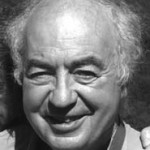
Michael J O'Hara
Michael John O’Hara was awarded the 2007 Harry H. Hess Medal at the AGU Fall Meeting Honors Ceremony, held on 12 December 2007 in San Francisco, Calif. he medal is for “outstanding achievements in research in the constitution and evolution of Earth and sister planets.”
Citation
The Harry H. Hess Medal recognizes “outstanding achievements in research in the constitution and evolution of Earth and other planets.” It is thus most appropriate that Mike O’Hara receive the 2007 Hess Medal of the American Geophysical Union.
Mike started as a field geologist studying the Scourie Gneisses in Scotland. As a pioneer, Mike used experimental petrology to study the petrogenesis of mantle rocks and rocks derived from the mantle that build the ocean crust. Mike’s talent is also marked by his insights into the petrogenesis of lunar basalts. It is fair to say that modern igneous petrology and geochemistry would not be the same without Mike’s many discoveries, creative efforts, and deep insights.
Garnet peridotites cropping out along orogenic belts are not of crustal origin but are deep mantle rocks tectonically brought to the surface. This was, however, not understood before O’Hara and Mercy [1963]. Harzburgites are melting residues after basalt extraction from the more fertile lherzolite, but this was not obvious before O’Hara and Yoder [1963].
The plagioclase/spinel and spinel/garnet peridotite facies boundaries in P-T space are well-known concepts when discussing mantle melting, but it was Mike who correctly established the topologies (curva-ture) of these boundaries in the 1960s.
Mantle melting residues are compositionally depleted and physically buoyant, but this concept and its geodynamic significance were not widely recognized until O’Hara [1973], who showed the difficulties of “mantle plume” models invoking undepleted fertile mantle that is too dense to ascend.
Mike demonstrated in the 1960s how changing pressure affects the peridotite-basalt phase equilibria. He understood back then that none of the erupted basalts is a primary magma, but most of us are too slow to appreciate this fact.
Mike predicted in 1965 that wet peridotite melting can produce silica-rich liquid resembling andesite, which was verified later by others.
Mike invented in 1968 the CMAS projection to analyze phase relationships and compositional paths of basaltic magma generation and evolution. This powerful tool has been used ever since in various modi-fied forms in research papers and in classrooms.
Mike quantified elegantly that trace element characteristics in basalts are not straightforward source signatures, but also record complex mantle melting and crustal magma chamber processes.
Mike stimulated much debate on alkali volatilization, parental magmas and sources, and lunar composition and evolution. His 107-page-long paper [2000] is a classic account of lunar and terrestrial basaltic petrogenesis history in the twentieth century.
Mike’s scientific success lies in his vision, insights, and approach—an approach that does not follow bandwagons, but challenges tradition and authority. It is his ability to debate and challenge that has rapidly advanced our field. Besides, Mike is a nice and caring man who has helped many Earth scientists in their endeavors with encouragement and advice. His enthusiasm continues to affect a new generation of scientists with the wonder of our planet.
Mr. President, members of the committee, and the Union, it is my great pleasure to present Mike O’Hara to you as the Harry Hess medalist for 2007.
—YAOLING NIU, Durham University, Durham, U.K.
Response
My first contribution to Earth science came as a first-year student during the 1953 Cambridge University Spitsbergen expedition: the serendipitous discovery of lower Cambrian fossils during a comfort stop, observation sharpened by polar bear tracks just encounteredand the expedition rifle 20 miles away. Education was thorough before Health and Safety got into the act! Proposed subsequently for election to the student geological society (yes, it was that stuffy), my attitude was deemed frivolous. Four years later I was invited to join, but I had a lot of fun in the mountaineering club meanwhile. Climbing enthusiasts approach an objective by the least probable, while still possible, route, another facet of multiple working hypotheses that maybe explains a few aspects of my career.
Stuart Agrell was pivotal in diverting me from a career as climbing instructor, C. E. Tilley in pointing me at the first high-P, high-T granulite facies terrain at Scourie for my Ph.D. At Edinburgh from 1958, Arthur Holmes and Fred Stewart fostered my interest in garnet-peridotites, and mutual interest in fermented fluids was pursued with Keith Cox, Ian Dalziel, and Brian Upton. There followed a wildly stimulating year at the Geophysical Laboratory with Frank Schairer and Hat Yoder. “Well, if it isn’t the late Dr. O’Hara again!” was Frank’s greeting, at 8:00 in the morning with umpteen overnight runs freshly quenched. Setting up an experimental labora-tory back at Edinburgh, I was joined by Gordon Biggar, a former student of Peter Wyllie (one of my heroes). Claude Herzberg and Ed Stolper were memorable research students.
Vigorous debates, terrestrial and lunar, ensued with Dave Green, Ted Ringwood (“I’ll get your passport revoked” on finding that I was Australian-born), Ian Carmichael, Paul Gast, and the “Harvard Mafia” of Tim Grove, John Longhi, and Dave Walkerjust who won that cocktail party?
Then I went to Aberystwyth in 1978, where I had the chance discovery of the most extensive Archaean metasediments in the North Atlantic craton at Stoer with my wife, Sue, in 1981–1982, and a thorough grounding in geopolitics with David Bowen and Keith O’Nions during the U.K. Earth Science Review 1986–1988 and its aftermath. Two brilliant years followed at Sultan Qaboos University, 1988–1990, with Samir Hanna, teaching very rewarding students primarily in the field. Then an outstanding late-career opportunity at Cardiff, masterminded by Dave Rickard, brought me into the association with Yaoling Niu that has illuminated my last decade.
I am greatly honored by the Hess Medal. Chance has often found me opposing the bulk of American scientific opinion. In that context, this is a very generous gift indeed. Thank you all. Harry himself commented on my work in 1968: “O’Hara’s paragraphs and even his sentences…are difficult to read.” He may have written my epitaph!
I leave you with four questions: Previous intellectual and technological cultures have flourished, and then perished. Why? What are we doing to avoid the same fate? Would life have evolved to its present state if each genetic experiment had required prior approval from six referees and a committee? Could Harry Hess have made his great contributions in today’s environment?
—MICHAEL JOHN O’HARA University of Wales, Aberystwyth, U.K.
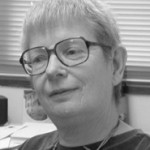
Alexandra Navrotsky
Alexandra Navrotsky was awarded the Harry H. Hess Medal at the AGU Fall Meeting honors ceremony, which was held on 13 December 2006 in San Francisco, Calif. The medal recognizes outstanding achievements in research in the constitution and evolution of Earth and other planets.
Citation
It is a great privilege and honor to introduce Alexandra Navrotsky as the recipient of the 2006 Harry H. Hess Medal. She is an outstanding scientist who has made important contributions to our understanding of minerals and other materials through a wide range of theoretical and experimental applications of thermodynamics. She was trained as a physical chemist and originally approached oxide chemistry through a materials perspective. However, her interests broadened and she became known as a leading authority in a wide range of subjects from chemistry through materials science to the geosciences. She held faculty positions at Arizona State University (Tempe) and Princeton University (N.J.) and is now at the University of California, Davis.
Alex has always impressed us by her depth of understanding of mineral chemistry, and we think she is the world’s leading scientist in the field of thermochemistry of minerals and related solid-state materials. At conferences she always has something important to say and in many instances demonstrates the ability to ask questions that go right to the heart of the matter being discussed.
Alex is recognized as a world leader in the geoscience community. She has trained a generation of students and postdoctoral fellows, scientists who now lead geoscience programs as faculty members in universities worldwide. Beginning with her early years in academia, she organized numerous workshops, conferences, symposia, and short courses that broke new ground in understanding the energetics, structures, and bonding in minerals and related materials. Her efforts at Arizona State and Princeton were instrumental in opening up the field of mineral physics, and she helped to spearhead the effort that eventually led to the creation of the Center for High Pressure Research—located at the State University of New York at Stony Brook, the Carnegie Institution of Washington, and Princeton University—the U.S. National Science Foundation Science and Technology Center, where for 11 years she not only served as a coprincipal investigator but also was one of its most effective spokespersons. During this time, she was elected to the U.S. National Academy of Sciences and was the first woman faculty member to be so elected from Princeton University.
While continuing to contribute to high-pressure geoscience, in the pastseveral years Alex has focused her attention on nanomaterials, microporous, and other complex materials of the near-surface environment. This effort includes studies at the bio-geo interface. While maintaining a foothold in thermochemistry, she continues to lead teams and collaborate with scientists utilizing whatever complementary techniques are necessary to understand materials phenomena, including neutron scattering, synchrotron radiation, vibrational spectroscopy, and ab initio calculations. This effort has been facilitated by her latest Center creation, Nanomaterials in the Environment, Agriculture, and Technology (NEAT), a unique and well-funded new enterprise that spans the physical and biological sciences.
In conclusion, with over 500 published papers covering order-disorder phenomena, glasses and melts, perovskites and oxides, and nanomaterials and microporous materials, it is difficult to find a person having a greater impact in the mineral sciences. Therefore we are very pleased that our longtime friend and colleague, Alexandra Navrotsky, is to receive the 2006 Harry H. Hess Medal of the American Geophysical Union.
—CHARLES T. PREWITT and ROBERT C. LIEBERMANN, University of Arizona, Tucson; and Stony Brook University, Stony Brook, N.Y.
Response
I am deeply honored to receive the Harry Hess Medal from AGU. I thank my nominators, supporters, friends, and colleagues. As the first woman to receive this medal, and the first recipient who has been on the Princeton University (N.J.) faculty, where Hess’s spirit lives on, this honor means all the more. My career has taken me from A to Z, amphiboles to perovskites to spinels to zeolites, from the lower mantle to the Earth’s surface, from solid state chemistry to materials science to nanoscience, nuclear waste disposal, and energy, and to geochemistry and mineral physics. All these topics represent intellectual variations on the same theme, namely, what it is on the microscopic scale that determines the stability of solids on the macroscopic scale.
I have been fortunate and happy in my career and life, both for its science and for the deep friendships, human insights, and international connections it has brought. Opportunity and luck have come to me, but admittedly luck favors the prepared mind. I have worked hard and had wonderful support and encouragement from colleagues, starting long before the word ‘mentor’ was anything but the name of an ancient Greek citizen. A positive attitude and a sense of humor have helped me through the rough spots. Too often I see young people hesitating about entering a faculty career, fearing it is too hard, too competitive, too uncertain. Yes, the stresses now are different, but I will not bore you with the problems of 35 years ago. To all, I say, “go for it!” The scientific quest is a joy in itself, and despite the seeming odds, you may succeed beyond your wildest expectations.
In my student and postdoc days, Ole Kleppa, Bob Newton, Hermann Schmalzried, and Arnulf Muan helped me form my scientific personality. My early career at Arizona State University was made possible by LeRoy Eyring and Morton Munk and helped by John Holloway, Peter Buseck, Mike O’Keeffe, and many others. At Princeton and now at the University of California, Davis, I have friends and colleagues too numerous to thank individually. In the profession let me single out Bob Liebermann, Charlie Prewitt, Don Weidner, Jerry Gibbs, Sue Kieffer, Tom Ahrens, Syun-iti Akimoto, Ted Ringwood, and Ian Carmichael. They and many others welcomed me, a chemist, into the geosciences. I thank the students and postdocs who have worked with me; many have gone on to research careers, and some are here at this ceremony. Last, I thank my late mother, personal friends, and the many pet dogs, past and present, who have given unconditional love. Finally, let me thank AGU again for this recognition.
—ALEXANDRA NAVROTSKY, University of California at Davis
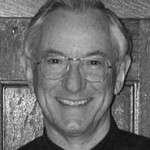
Sean C Solomon
Sean C. Solomon received the Harry H. Hess Medal at the 2005 Fall Meeting Honors Ceremony, which was held on 7 December in San Francisco, Calif. The medal is given for outstanding achievements in research on the constitution and evolution of the Earth and other planets.
Citation
“It is a privilege to present Sean C. Solomon as the American Geophysical Union’s Harry H. Hess Medal recipient. During more than 30 years of accomplished research he has established himself as one of the remarkable leaders in geophysical research today.
“Sean began his career working on the nature of seismic attenuation and the implications for upper mantle structure. This early work was the beginning of a long-term interest in understanding the thermal structures of planetary interiors.
“In 1978, he published a noteworthy paper in Geophysical Research Letters that provided an elegant explanation of the thermal evolution of small one-plate planets like the Moon and Mercury in the absence of plate recycling. This ‘one-plate planet’ concept has become the paradigm for understanding the tectonics of the terrestrial planets. Sean has played the leadership role over more than two decades in the understanding of the contrasting evolutionary paths of Venus and Earth and is responsible for some of the most important results from the Magellan mission.
“Sean’s interest in the Earth’s mid-ocean ridge system has been long-standing and diverse. His most important contributions, following his earliest work on shear wave attenuation and melting beneath the Mid-Atlantic Ridge, have been in the understanding of the seismicity of oceanic ridges and transforms, and the use of active and passive marine seismic experiments to probe crustal and upper mantle structures and processes. During this era Sean was actively involved in seagoing fieldwork and at MIT [Massachusetts Institute of Technology, Cambridge] led one of the earliest ocean-bottom seismometer groups.
“Recently, Sean has developed an interest in testing the plume hypothesis for the origin of hot spots, and with his colleagues in the Department of Terrestrial Magnetism (DTM) at the Carnegie Institution [Washington, D.C.], he is playing the lead role in an impressive set of experiments.
“Sean maintains a major leadership role in studies of the terrestrial planets. He has long been interested in the role of cooling strain in the evolution of one-plate planets, and to make a major step forward in these efforts he created, and has become the principal investigator of NASA’s mission to Mercury (called MESSENGER, the Mercury Surface Space Environment, Geochemistry, and Ranging mission) that was successfully launched in 2004.
“Throughout his career Sean has been a selfless mentor to his younger colleagues and students, many of whom are today leaders in their own right. He has contributed substantially to the community through the leadership of agency initiatives at NASA and the U.S. National Science Foundation, through his leadership of the AGU, and through his superb job as director of DTM.
“Sean’s contributions to our science are remarkable in their depth and diversity. His research papers are notable for their rigor—they stand the test of time in fast moving fields that cause many lesser publications to be superseded. He combines a keen understanding of the importance of high-quality observations with an ability to develop elegant theoretical insights that build compelling and powerful models. Sean is unique in the breadth of his abilities and the magnitude of his research accomplishments, and thus it is wise and appropriate that he receive the Harry H. Hess Medal from the American Geophysical Union.”
—G. MICHAEL PURDY, Lamont-Doherty Earth Observatory, Palisades, N.Y.
Response
“The Harry H. Hess Medal has special meaning to me on several levels, including tonight’s citationist, the professional society sponsoring the award, and the individual for whom the medal is named.
“Mike Purdy and I have partnered in five oceanographic cruises, cosupervised six Ph.D. students, and coauthored 15 papers. As anyone who has been to sea with Mike knows well, at every dinner he dresses more or less as you see him now, a sartorial model for us all. Thank you, Mike.
“AGU is my principal scientific society. I have given 40% of my professional talks at AGU meetings, published 50% of my papers in AGU journals, and devoted time to AGU governance. I even chaired the committee that persuaded John Orcutt to stand for AGU president. A coincidence tonight, I am sure.
“The first AGU meeting I attended was in spring 1967. The plate tectonic revolution was at its eruptive peak, and in two remarkable sessions the giants of the field rose one by one to lay out the latest observations in support of seafloor spreading, subduction, and plate kinematics. As a first-year graduate student I was enthralled, and I returned home quite sure that what I had witnessed would be typical of every AGU meeting I would attend thereafter.
“One of those who spoke then was Harry Hess, a scientific hero of mine. A man of remarkable breadth, Hess made fundamental contributions to mineralogy, petrology, the understanding of layered igneous complexes, marine geology and geophysics, and deep crustal drilling. Moreover, his creativity did not ebb with age; his deduction of the nature and cause of the anisotropy of the oceanic upper mantle and his paper “History of ocean basins”—the revolutionary shot heard round the geoscience world—were written late in his life and stand as inspirations to all of us with graying hair and expanding foreheads.
“Hess, too, felt a responsibility to return what science had given him through professional service and to write about the science issues of his day. He was president of two sections of AGU. He chaired the Space Science Board during the years in which plans were laid for the geological exploration of the Moon and the opening search for evidence of life on Mars. Sadly, Hess died in 1969 while chairing a meeting of that board, weeks before he was due to be sent some of the first lunar samples returned to Earth by the Apollo 11 astronauts.
“I am extraordinarily fortunate: I’ve worked at two institutions—MIT and the Carnegie Institution of Washington—that have allowed me to set my own research directions; I’ve collaborated with dozens of outstanding students, postdoctoral scientists, and colleagues; I’ve been blessed with a supportive wife and family; and I’ve been alive when the exploration of the solar system and much of the detailed investigation of the Earth’s interior were first carried out.
To my nominators, the medal committee, and the Union I am deeply appreciative of their recognition of that good fortune.”
—SEAN C. SOLOMON, Carnegie Institution of Washington, Washington, D.C.
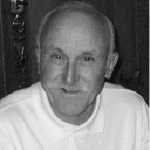
Adolphe A Nicolas
Adolphe Nicolas received the Hess Medal at the 2004 Fall Meeting Honors Ceremony on 15 December, in San Francisco, California. The medal is given for outstanding achievements in research in the constitution and evolution of Earth and other planets.
Citation
Adolphe Nicolas is a pioneer in Earth sciences. He has almost created a new field that we can name: the textural geodynamics.
The principle of such study is to observe with a microscope the texture of an ultramafic rock and, combining those observations with field measurement and theoretical considerations about the crystal deformation and rocks plasticity, deduce important information about the dynamics of the mantle.
Originally, he started those studies with the late Dale Jackson from U. S. Geological Survey, which initiated this field on his classical study of the Stillwater Complex ( Montana) and its extraordinary fluid dynamics reconstitution. Adolphe had the chance to work with him, and I remember Dale, who was not overly given to complimenting his colleagues, saying to me, Adolphe is going to be my successor.
He is the best of the new generation of structural geologists of igneous rocks. At that time, Dale was not envisaging his premature death.
Adolphe, in fact, oriented his work in a quite different direction from that followed by Dale. He did not work on molten rock that crystallizes under a fluid dynamics; instead, he worked on solid plastic deformation.
His second collaboration, which has turned very positive, is the association with Jean-Paul Poirier.
In fact, when Adolphe met him, Jean-Paul was a metallurgist expert in plastic deformation of metals. Adolphe convinced him to become a geophysicist, and this conversion was a great benefit for our field.
Together, they worked on several projects and published a classic book, Crystalline Plasticity and Solid State Flow in Metamorphic Rocks (John Wiley). This collaboration gave to Adolphe the theoretical basis that he needed.
This is the genesis. But what is more important is what Adolphe Nicolas has achieved as an original contributor. We can divide his contribution into three important chapters.
The first major contribution is high-temperature peridotites. He studied mainly Lanzo ( Italy) and in less detail Baldissero and Lherz (France). In those studies, made in collaboration with Françoise Boudier, Adolphe has shown how those pieces of mantle have been emplaced in the great tectonics movements of the Alps. But, more important, they deciphered the deformation mechanism. They distinguished the primitive deformation with the pyroxenites layers folded and, to the secondary lineation associated with the tectonics intrusion of the body and with the decompressive melting which generates magmas as gabbros dykes. Those studies were extremely important for us when we developed the marble-cake model for the upper mantle.
The second major contribution of Nicolas’s school was the work done with Anne-Marie Boullier on the xenolith intrusion in kimberlites. They distinguished the texture of the xenoliths coming from the asthenosphere from the one coming from the lithosphere, with the famous pyroxene geotherm and its famous kink.
The third contribution is, of course, his work on the ophiolithes of Oman and the careful study he made about the ultramafics fabrics related to the creation of oceanic crust. This work is itself a monument with implications about the partial melting mechanism, injection of magmas as hydro-fracture to the symmetry of ridge crest to the different regime of oceanic ridges depending of spreading rate.
All of that with careful field work, microscopic observation, and lots of thinking!
Adolphe Nicolas is really a master of modern geoscience in exactly the same spirit of Harry Hess, who started studying serpentine ending to seafloor spreading. Adolphe follows this trend but deciphers the mechanism.
—CLAUDE J. ALLÈGRE, University of Paris, France
Response
Thank you, Claude. Thanks for this flattering citation and for your support through so many years. You have paved the way for my response by evoking the names of outstanding scientists and dear friends who accompanied me during my career. Indeed, my master has been Dale Jackson, who invited me to the USGS in Menlo Park, in 1971, following a memorable trip, the year before, through most western European peridotite massifs. I learned from him what and how to observe in the field. Dale introduced me to microscope textures in the lab; I could start relating field observations with what I knew from solid-state deformation with my background in physics and from illuminating discussions with Harry Green and the David Griggs’ group at UCLA.
Back in France, with Françoise Boudier and Jean-Luc Bouchez, we got acquainted with petrofabric analysis with the Emile Den Tex group in Leyden. Relating textures and fabrics, we discovered the basic principles of kinematic analysis in plastically deformed rocks. Through mapping of the relevant field structures, flow analysis in geological formations became possible. Jean-Luc moved to quartz-bearing crustal rocks, and, with Françoise, we remained in our beloved olivine fabrics and mantle formations. As you mentioned, Claude, my next major encounter has been was Jean-Paul Poirier, who stabilized my shaky knowledge in solid-state deformation and whom, in return, I introduced to field geology. Another important encounter has been with Dave Mainprice, who joined our lab in 1982, opening the new field of petrophysics.
By 1975, we started to apply our structural and kinematic approach to ophiolites, our real interest being in the deep structure and dynamics of oceanic ridges. With dedicated students, our journey led us to map over a dozen ophiolites. In Menlo Park, I had been in the field with Bob Coleman who, through the years, resisted with good humor all our ophiolitic fantasies. In 1979, Bob invited Françoise to Oman. Since then, we have never missed a field season in this marvelous ophiolite. With marine geophysicists who visited it, I think here of Doug Toomey, we have progressed, understanding better now the deep structure and dynamics of fast spreading ridges. Ten years ago, Peter Kelemen was inoculated with the Oman virus. In spite of uneven cooperation, Peter took the initiative of this nomination, finding the words to obtain it. Nice of you, Peter, and thanks.
My last words are to say how proud I am to receive the Hess Medal, sharing Harry Hess’s interest in oceanic ridges and following his approach. Among Hess’s more outstanding contributions, I wish to mention one, which remains central to our lab activity. In 1964, very soon after the discovery of seismic anisotropy in the mantle under oceans, but before any experiment on olivine slip systems and flow in peridotites, he had the right intuition, ascribing anisotropy to olivine-dominated mantle flow. With such a flair, no wonder Harry Hess was able to trace enemy submarines during World War II, finishing with the rank of Rear Admiral!
—ADOLPHE NICOLAS, USTL Montpellier, France
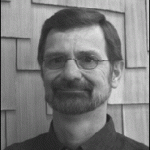
David L Kohlstedt
David L. Kohlstedt was awarded the Hess Medal at the AGU Fall Meeting Honors Ceremony, which was held on 10 December 2003, in San Francisco, California. The medal honors “outstanding achievements in research in the constitution and evolution of Earth and sister planets.”
Citation
“The official ‘short’ citation by AGU notes that David Kohlstedt receives the Hess Medal ‘for his fundamental contributions to understanding the Earth’s upper mantle rheology.’ The short citation is short-sighted: it misses the larger point of David’s contribution to the geological/geophysical community, which is the broad—albeit exacting—application of solid-state physics and solid-state chemistry, theory and experiment, to better understand chemical, mechanical, and microstructural evolution of the materials that constitute the terrestrial planets. David has turned effectively his creative attention to nanometer-scale physics in order to understand kilometer-scale phenomena, to human-timescale experiments in order to characterize geological-timescale events.
“David pursued his doctorate in solid-state physics at Illinois in the late 1960s, when that community was the hotbed of innovative studies of mechanical and chemical dynamics in crystalline solids. Upon entering Earth sciences as a research associate with Chris Goetze and Bill Brace at MIT (1971-1975), David’s Illinois-solid-state perspective came to the fore: with Goetze, David performed pioneering experiments on the rheology of olivine single crystals. At the time, the experiments—which employed Earth-like deviatoric stress and non-Earth-like elevated temperature—were controversial. The problem of mantle viscosity and its mechanisms, however, demanded an experimental approach that paid attention to atomic-level phenomena: only a temperature-based extrapolation could ‘capture’ the planetary-relevant physics. This early-career illustration is archetypical: to David, the physics of the planet-scale problem dictate the solid-state physics that create the experimental approach.
“Two faculty appointments later (Cornell, 1975 to 1989; Minnesota, 1989 to present), here is an incomplete list of David’s contributions: proof of a mechanical equation of state for dislocation plasticity in ionic and covalent solids; characterization of the impact of oxygen and oxide activities on dislocation and diffusional flow of olivine; characterization of the role of partial melting on the structure and plastic/anelastic rheology of mantle assemblages, on melt permeability, on scaling in melt segregation, and on interaction of metal melts with crystalline silicates; characterization of point-defect thermodynamics, diffusion kinetics, and the storage of ‘water’ in ‘anhydrous’ mantle minerals; and characterization of the crystal structure, chemical composition and dynamics of grain boundaries in mantle assemblages and other oxides and silicates. A thoughtful look at the literature reveals that David and his group have been at the forefront in all of these efforts, posing exacting questions concerning the physical mechanisms underlying geophysical processes and then designing equally exacting experiments based on simplifying assumptions that are rigorously defensible.
“David Kohlstedt leaves a wake of goodwill wherever he passes. Kindness and gentle good humor are David’s hallmarks: he values good relations among people and seeks always to promote understanding between individuals and groups. His work and interactions are uniformly more concerned with shedding light than with creating heat. Maintaining such an outlook in high-stakes academia is challenging; David nevertheless perseveres—and because of it, he delights.
“Harry Hess’s observational research encompassed geology, geophysics, and petrology, and focused on the physical and chemical dynamics of the mantle. David Kohlstedt’s experimental research shares fully both scope and purpose. And while David Kohlstedt’s ‘atoms-up’ perspective contrasts with Harry Hess’s ‘global-down’ approach, the quality and impact of David’s work matches beautifully that of the scholar for whom this award is named.”
—REID F. COOPER, Brown University, Providence, R.I.
Response
“Thank you, Reid, for the warm and generous citation. My adventures in the Earth sciences have been particularly rewarding because of scholar friends like you, Brian Evans, Greg Hirth, and Andreas Kronenberg; your eloquent prose has prevailed. I am profoundly honored and almost overwhelmed to receive the Hess Medal.
“With limited space, it is impossible to do more than touch on a few defining moments and acknowledge a few fellow travelers.
“How does one move from studying physics of the solid state to exploring dynamics of the fluid Earth? Family ties are foundational. Without Sally, my wife, a respected historian of science, I would undoubtedly be an actuary in Appleton. (If you don’t get it, don’t worry; it’s a Lutheran joke.) Kris and Kurt, our sons, still challenge me on the ski slopes and join me in exploring South Dakota, my homeland.
“Outstanding teachers energized my early exposure to physics. Arnold Studtmann drew me into physics with his exciting demonstrations, Manuel Bretscher stimulated my interest with his clear physical insights, and Wendell Williams instilled in me the possibility of using principles of solid-state physics to attack problems in other fields.
“Earth sciences entered my life when Bill Brace brought a young materials physicist from Cambridge to Cambridge, from the banks of the Cam to the shores of the Charles, with a postdoc position at MIT. Bill quickly discovered that I knew nothing about stick-slip, not to mention about rocks. So he sent me to the other end of the corridor to work with Chris Goetze, a brilliant experimentalist, an enthusiastic mentor, and an intrepid explorer. Research was itself a constant adventure and continual education with Chris, who instilled in me a deep sense of excitement for intellectual exploration.
“Once a materials science faculty member at Cornell, a talented faculty helped me explore new territory and attract a venturesome team of students. With Reid Copper and Bart Riley, we traveled into the world of partially molten rocks, while with Daniel Ricoult, Quan Bai, and Duane Dimos we started to map the domain of point defects.
“In the early 1980s, I encountered Herman and Mervyn. Hermann Schmalzied educated me on the finer details of point defects and supplied the theoretical framework essential for the task. Synchronously, Mervyn Paterson enticed me to Australia to work on water-weakening in olivine and provided the equipment for doing so. Oh, yes, Mervyn subsequently supplied a young postdoc, Steve Mackwell, who ventured fearlessly into experiments on the role of water on the viscosity of mantle rocks.
“A bit over a decade ago, Minnesota brought me firmly into geophysical territory. Surrounded by supportive faculty and stimulated by inquisitive graduate students, the last decade has taken my quest in persisting, though sometimes unforeseen, directions. Here, Mark Zimmerman laid down the law for partially molten lherzolite, David Goldsby remapped the flow law for ice, Sue Ginsberg discovered deformation-driven melt segregation, and Shenghua Mei quantified the dependence of viscosity on water content. Amazingly creative, if not exceptionally tall, postdocs included Take Hiraga, who explored partitioning of incompatible elements to grain boundaries, and Greg Hirth, who investigated the interplay between water and melt in the formation of the compositional lithosphere. Current students continue the spirit of adventure. While Ben Holtzman discovers sweet music in melt segregation, Sash Majumder explores the physics of fluid migration. As Shushu Chen leads us from the mantle up into the crust, Justin Hustoft and Nate Groebner venture from the mantle down into the core. And Ted Scott, not being satisfied with adventures on Earth, explores partial melting on Io.
“Although my contributions to geophysics may not rise to the scientific or aesthetic level of the geopoetry embodied in Harry Hess’s theory of seafloor spreading, I hope that at least some will now hear the harmonics of geomusic in the intermittent flow of melt and water deep within the Earth and perhaps elsewhere in the solar system.
“For the countless adventures throughout my career in geophysics, I thank you all.”
—DAVID L. KOHLSTEDT, University of Minnesota, Minneapolis
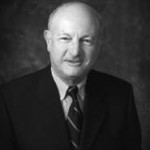
Gerald Schubert
Gerald Schubert was awarded the Harry H. Hess Medal at the AGU Fall Meeting Honors Ceremony, which was held on 8 December 2002, in San Francisco, California. The medal is given for outstanding achievements in research in the constitution and evolution of Earth and sister planets.
Citation
“It is good we are here this evening, not only to honor our friend and colleague Jerry Schubert, but also, perhaps as important, to set the record straight. Otherwise, it is likely that centuries from now historians will struggle with the mystery of whether Gerald Schubert was one person or, rather more plausibly, a pseudonym for a group of individuals. Great effort could be expended on this enigma, tracts written, conferences held, university departments created, and countless academics gainfully employed. But we here tonight can save them all the trouble and expense.
“For although Jerry Schubert is an incomparable polymath, with a list of major contributions to make us seethe with jealousy, we can attest to the fact that he is indeed just one man. However, Jerry’s prodigiousness and diversity aside, what is most remarkable is that so many of his contributions have endured to become classics of geophysics. Many of us would be happy to make a lasting impression in one field; but to have made such an impression in so many fields is simply extraordinary, not to mention intimidating. Since Jerry has more papers than words ‘officially’ allowed in this citation, I will give you only a brief flavor of some of his major contributions.
“Jerry began his career in aeronautical engineering in the 1960s, but was coaxed first into astrophysics, and then later into planetary physics. Early in his career, in the 1960s and 70s, Jerry was one of the primary investigators for the Apollo program’s lunar magnetometer instruments, which were used to infer lunar crustal magnetism. As is typical in Jerry’s career, he has come full circle and recently used apparent magnetic lineations on Mars to constrain the onset and demise of the Martian dynamo.
“Also in the 1960s, when seismology and mineral physics suggested the existence of phase transitions in the mantle at 410 and 660 km depths, Jerry presented several pioneering studies on how phase transitions could either inhibit or facilitate whole mantle convection. And again later in the 1990s, Jerry was at the forefront of similar studies involving catastrophic mantle overturn events. However, before leaving the 1960s, Jerry’s ‘moving-flame model’ provided what remains one of the primary theories to explain why Venus’s atmosphere moves faster than, but opposite to, the planet’s slow rotation.
“Jerry was also one of the pioneers of planetary thermal history models and was one of the first people to propose that secular cooling contributed to Earth’s heat loss, which is therefore not, as was commonly assumed, in equilibrium with the heat produced by radioactivity. Similarly, Jerry was involved in work with David Stevenson that explained the lack of a strong magnetic field on Venus as being due to a central temperature too high and pressure too low to initiate freezing of an inner core. Jerry’s contribution to global-scale mantle dynamics also entailed many of the first papers on three-dimensional spherical convection which showed that even simple convection had many of the features we associate with plate tectonics. Jerry’s work on the physics of mantle plumes offered some of the first strongly nonlinear analyses of plume initiation, conduit solitary waves (possibly leading to discrete island formation), and the nature of lithospheric thinning by plumes. His studies on the thermal structure of subducting lithosphere, the lifting force on slabs associated with mantle corner flow, lithospheric flexure at trenches, migration of slabs, and subduction initiation are all fundamental to our present understanding of subduction zones. Moreover, Jerry’s hypothesis that Venus’s coronae are the sites of Venusian subduction generated considerable excitement during the height of the Magellan program.
“Jerry’s seminal studies of the propagation of continental freeboard gave the first estimates of Phanerozoic and Precrambrian crustal production. His investigation of river morphology was one of the first attempts to quantify the non-linear processes behind meandering and fluvial erosion. His papers on glacial surges due to shear heating and melting provided a model for the evolution and motion of large ice sheets during climate changes. And his many works on flow and convection in porous media are still considered fundamental studies of geothermal processes.
“After the discovery of intense volcanism on Jupiter’s innermost moon Io, Jerry and students investigated the role of tidal heating in a model of Io accounting for both an elastic lithosphere and a partially molten asthenosphere. Their papers predicted a heat flow pattern on Io that was born out nearly 15 years later by telescopic and satellite measurements. Jerry and colleagues also provided the most recent models of tidal heating in Europa, and have presented evidence of subsurface oceans on both Europa and Callisto with obvious relevance to the existence of extraterrestrial life.
“Jerry has worked at length on the effect of upper atmosphere gravity waves and tidal forcing on OH nightglow and ozone, on topography-driven gravity waves on Venus, and on wave disturbances induced by the impact of Comet Shoemaker-Levy with Jupiter. Jerry led one of the first groups to numerically simulate zonal winds as on Jupiter from deep convection in a rapidly rotating atmosphere. And, because Jerry Schubert hasn’t worked on enough problems, he has lately become involved in geodynamo studies which led to the discovery of a new phenomenon called ‘teleconvection.’
“However, perhaps one of Jerry Schubert’s greatest contributions is that he, with a few others, was a pioneer in bringing a classical physicist’s perspective to the many fields of geology and planetary science. The use of a simple first-principles approach to solving geophysical problems has flourished and thus proven an invaluable gift to our community. There is perhaps no greater testimony of this gift than the book he co-authored with Don Turcotte, Geodynamics, one of the most highly cherished texts in our field. Recently, Jerry, with Don Turcotte and Peter Olson, produced a new text, Mantle Convection in the Earth and Planets, which promises to be the magnum opus of mantle dynamics.
“Finally, Jerry Schubert has tirelessly served the AGU community through his excellence as a teacher and advisor, evident in the number of his students, essentially all still active in science. He has been a conscientious citizen through his participation in space experiments, his large number of editorial appointments, his chairmanship of the Earth and Space Sciences Department at UCLA, and most recently, his election to president of AGU’s Planetary Sciences Section. I should also note that this has been a good two years for Jerry; in addition to this honor we are presenting tonight, Jerry was also inducted into both the American Academy of Arts and Sciences and the National Academy of Sciences.
“In the end, it is clear that Jerry Schubert has made, and will undoubtedly continue to make, a profound and lasting impact on our fundamental understanding of the Earth and planets that is nothing short of astounding, and for which we in the AGU are both proud and honored to present to him the Harry H. Hess Medal.”
—DAVID A. BERCOVICI, Yale University
Response
“Mr. President, ladies and gentlemen, col-leagues, friends, and family members: I have a number of thanks to offer, so let me begin by thanking David Bercovici for his kind and generous remarks and his friendship. It was only 6 years ago that Dave and I shared the same stage, but in a reversal of our present roles as citationist and medalist. Thanks also to the Hess Medal Committee for selecting me, and to the colleagues who put my name forward and supported my nomination for this special honor. I did not know Harry Hess personally; he died just a couple of years after I entered geophysics. But this recognition means a great deal to me because I have known almost all of the recipients of this medal since it was established in 1984, and I’m proud to be included among them.
“Harry Hess participated in one of the great revolutions in Earth science. Indeed, he played a major role in establishing the theory of sea-floor spreading and plate tectonics. I have no claim of any similar paradigm-setting contribution, but I did follow on from Harry’s ideas and spent much of my career studying mantle convection, the cause of seafloor spreading. I have also been fortunate to have participated in the great age of close-up exploration of the solar system, an age Harry Hess anticipated and helped plan when he was at the helm of the Space Studies Board. The thrill of discovery is unparalleled, and it’s one I have experienced several times in the Apollo missions to the Moon, the Pioneer and Magellan missions to Venus, and the Galileo mission to Jupiter and its satellites.
“In the last few months, I’ve done a lot of reading about Harry Hess. I found out that we not only had research interests in common, but we also both served in the Navy and we both managed to get some science done during that service. Harry managed to collect data on the bathymetry of the seafloor while commander of a troop transport in the Pacific during WWII. Again my accomplishment pales in comparison, but I managed to write a Ph.D. thesis while on duty at the U. S. Naval Nuclear Power School near Berkeley.
“All of us stand considerably taller on the shoulders of students and colleagues, and I’ve been very fortunate to have worked with the very best. You’d be very impatient with me if I tried to name all of them. I won’t, of course, but I must acknowledge Don Turcotte, who helped me obtain a master’s degree at Cornell in 1961 and with whom I’ve had an active collaboration and friendship ever since. Don recently entered the eighth decade of his life, and he’s been honored at this meeting as the Lorenz lecturer and by a special Union session. I also must mention Bill Kaula, my former UCLA colleague, who encouraged and supported me throughout the years. If he were with us today, he’d take some satisfaction in a prediction he made some 27 years ago at an AGU event like this one.
“The last but most important person I’ll single out for thanks is my wife, Joyce. She’s made it possible for me to focus my energies on science, and for that I’m especially grateful.”
—GERALD SCHUBERT, University of California, Los Angeles
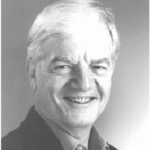
Albrecht W Hofmann
Albrecht W. Hofmann received the Harry H. Hess Medal at the 2001 Fall Meeting Honors Ceremony on 12 December in San Francisco, California. The medal is given for outstanding achievements in the research of the constitution and evolution of Earth and sister planets.
Citation
“Al Hofmann has been responsible for some of the major discoveries and current paradigms in mantle geochemistry stemming from the study of oceanic basalt. Therefore, it is particularly appropriate that he receive a medal named after Harry Hess, a pioneer in understanding the ocean floor and ocean islands. Al’s research also has provided inspiration to many younger scientists, myself included, by opening our minds to the creative uses of trace elements. The frustrating part is remembering any particular inspirational conversation with him, because he and Julie also have opened up their wine cellar on so many occasions. Therefore, I will focus on Al’s wonderful scientific career as opposed to my hazy recollections of my trips to Mainz.
“Al Hofmann’s earliest research was in diffusion. By the mid-1970s, so many brave but bad experiments had been attempted that the ability of experimentalists to provide reliable constraints on diffusivities in natural systems was being questioned. Then Al, along with others such as Bruce Watson, Stan Hart, and Al’s doctoral mentor, Bruno Giletti, started producing excellent data for silicates and silicate liquids. Al’s classic work provided the first constraints on the minimum length-scales of mantle isotopic heterogeneity. This was tough stuff. Al realized that he needed to slow down a bit, so in 1980, he left DTM and headed back to Germany, where he became director of the Geochemistry Division of the Max-Planck Institute for Chemistry in Mainz.
“Scientists who move back to Europe from the United States have a tendency to relax or disappear beneath editorships, committee work, or even organizing major conferences, all with the primary but clearly fruitless aim of competing with AGU. Al probably intended to be no exception. When he moved to Mainz and began collecting wines, he may well have sat with his feet up and contemplated an easy career ahead. He even might have said, ‘Let me get myself onto some big committees, and for the science we’ll just measure lots of ordinary basalt, the most common igneous material on Earth. We’ll get loads of new data, which everybody else will have to cite! Then my name as a memorable European geochemistry professor will be secure.’ You see, with his move to Mainz, Al was well placed to take advantage of excellent analytical support and, together with his colleagues Bill White and Klaus-Peter Jochum, was able to determine a range of critical trace elements. This foundation, if you like the very definition of what ‘normal’ basalt is like in terms of incompatible trace elements, has now formed the basis for everybody else’s research.
“However, Al is driven primarily by his interest in how the Earth ‘works.’ He could never be complacent and fail to use trace elements in creative ways. Instead he used basalt to sort out the VICE (very incompatible elements) and MICE (moderately incompatible elements) and came up with a sequence of increasing incompatibility that became the basis for modern mantle-normalized plots. More important, he discovered that certain element ratios that one expects to be highly variable because of subduction of altered crust and sediment are surprisingly uniform in normal basalt. Al was afforded no chance for relaxation but was doomed to a life at the forefront of scientific debate and discovery. He had stumbled upon something of deep significance. He even had the good taste not to name it another geochemical paradox. He showed that mantle trace elements carry the homogenized record of ancient crustal production and recycling and that isotopic heterogeneity has been largely superimposed upon this at a later time.
“Al’s insights into what must be causing this variability in isotopic compositions in the mantle are equally important. Together with Bill White, Al showed that the isotopic compositions of ocean island basalts largely reflected recycling. More than any others, these two individuals are credited with pulling together the idea that ocean island basalt is produced from melting deep-mantle plumes that originated as reheated deeply subducted ancient slabs. Like-minded contemporary visionaries, notably Clem Chase, came to similar conclusions.
“To sum up, Al Hofmann’s research on the study of the Earth’s interior has provided important foundations upon which the rest of us have come to rely. On behalf of all of your friends and colleagues around the world, Al I would like to say ‘many congratulations,’ and also ‘many thanks’ for your contributions, support, and inspiration, not to mention the wine cellar.”
—ALEX N. HALLIDAY, ETH Zentrum, Zurich, Switzerland
Response
“Thank you, Alex, for your kind words of praise, and thank you, Hess Medal Committee, for making such a fortunate choice. Fortunate for me, anyway. I want to tell you a little personal story, which may explain why the Harry Hess Medal is more special to me than any other recognition I could possibly ever receive.
“Almost exactly 40 years ago, while nominally studying geology at the University of Freiburg, Germany, but actually spending most of my time at the local pubs, I decided that, in order to improve my personal work ethic, I needed to go to graduate school in the United States.
“So I wrote a letter to my older brother, Fritz, who was a postdoc at the Plasma Physics Lab in Princeton. I asked him to go to the geology department and find out which American graduate schools might have suitable departments where I might send my application.
“Fritz went and by chance encountered the department chairman, who was none other than Harry Hess. Hess explained to Fritz that his kid brother would have a hard time being accepted by the traditional ‘good’ schools because of a serious lack of credentials. However, there were two schools with brand-new graduate programs in geology, and not too many people knew about them, so chances of acceptance to these schools would be significantly enhanced.
“The two schools were Brown University and Scripps. I applied to both of them, in addition to a more traditional list of the usual suspects like Harvard, Princeton, Yale, etc. I was promptly rejected by all of them, except-you guessed it-Brown and Scripps. The letter from Brown arrived a few days before the Scripps letter. I accepted the same day. “So you see, I literally owe my career almost entirely to Harry Hess’s excellent advice to me via my brother, and I can assure you that without Harry Hess, whom I never met in person, I would not be standing here in a Penguin suit.
“There is, yet, just a little more to the story: I enrolled at Brown in September 1962, went to New York City for the Annual Meeting of the Geological Society of America 2 months later, and listened raptly to a presidential lecture entitled ‘An Essay in Geopoetry,’ delivered by none other than Harry Hess. In retrospect, I think I witnessed the birth of the modern theory of the Earth.
“Unlike the smart, young, and eager faculty at Brown, who were working hard at turning traditional geology into REAL science, and therefore didn’t have many good things to say about this lecture, and perhaps because I was not weighed down by a lot of previous knowledge, but had indeed heard of Alfred Wegener’s theories, I found this geopoetry all quite interesting and reasonable. I think it also helped me to recognize and accept speculation as an important tool of science.
“Fortunately for me, my luck did not stop with the serendipitous Harry Hess effect. I came to Brown hating chemistry, as a result of some particularly bad high school grades. But somehow, I ended up in the gentle fangs of my subsequent long-term mentor and friend, Bruno Giletti, who assured me that isotope geochemistry wasn’t really too much like real chemistry, so that it would be safe to do a master’s thesis on the subject. Eventually, I became his first Ph.D. student. It was Bruno who turned me into a scientist, by teaching me about isotopes, thermodynamics, the dangers of cheap liquor and bad food, and many other important things in life.
“Still, my luck did not stop even then: I was accepted by the Carnegie Institution of Washington and spent 10 of the most rewarding years of my life in the company of people like Stan Hart, Tom Krogh, Nobu Shimizu, and my first postdoc, Mordechai Magaritz, who is, unfortunately no longer with us.
“Ten years went by, and then Max Planck made an offer I couldn’t refuse. Thus, for the past 21 years, I have had the privilege to work with a large group of outstanding scientists and students from many countries, and with many outstanding technicians, administrators, and secretaries. I hope they will forgive me, and I am sure you will forgive me, if I don’t name them individually. I am truly grateful to all of them, but in retrospect, I would have given a lot to have had the chance to meet and thank Harry Hess in person.
“Thank you all very much for listening to my story.”
—ALBRECHT W. HOFMANN, Max Planck Institute for Chemistry, Mainz, Germany
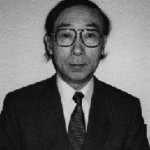
Ikuo Kushiro
Ikuo Kushiro was awarded the Harry H. Hess Medal at the AGU Spring Meeting Honors Ceremony, which was held on June 2, 1999, in Boston, Massachusetts. The medal recognizes outstanding achievements in the research of the constitution and evolution of Earth and sister planets.
Citation
“Characterization of rock-forming processes requires laboratory experiments to determine the physicochemical properties of materials or their analog model compounds at high temperatures and high pressures. The experimental data, however, are not particularly useful unless integrated with observational and theoretical information. Ikuo Kushiro, this year’s winner of the Harry H. Hess Medal, approaches experiments with this integrated view as his guiding light. He does experimental petrology, geochemistry, and geophysics, but always with the understanding that the experimental data provide only a piece of a more complex puzzle. It is perhaps in part because of this attitude that Ikuo and his colleagues have provided the fundamental experimental data on phase equilibria, element partitioning, and equation-of-state of molten silicate applicable to most major rock-forming processes in the Earth. All too often we ask what we can do with our instrumentation and proceed from there. Ikuo first asks the real question and then designs the experiment.
“Ikuo Kushiro’s career as an experimentalist began in earnest shortly after receiving his Ph.D. from the University of Tokyo in 1962. He was then appointed as a research associate at the university, but within months we find him at the Geophysical Laboratory of the Carnegie Institution of Washington, where he spent the next 3 years as a postdoctoral fellow working with Frank Schairer and Hat Yoder. This was an extremely active period where his experimental studies of olivine + 2 pyroxenes + aluminosilicate phases led to the establishment of the principal phase relations governing basalt petrogenesis at high pressure and temperature.
“Upon his return to the University of Tokyo in 1965, Ikuo began a collaboration with S. Akimoto. A primary objective at that time was the search for mineralogical storage of H2O in the Earth’s interior. In 1967, they identified phlogopite as such a mineral with pressure-temperature stabilities well into the upper mantle. In 1970, the H2O-bearing mineral, K-richterite, was found to have a comparable stability field. Much subsequent experimental work has reconfirmed that these minerals are two of the most important minerals with which H2O can be recycled into the Earth’s interior.
“These experimental results on hydrous phases in the upper mantle led naturally to the question of how H2O affects melting phase relations of peridotite. In 1968, Kushiro and his colleagues reported that the solidus temperatures of hydrous peridotite are 400°-500°C lower than those without H2O. This observation implied that temperatures near 1000°C were sufficient to initiate melting of peridotite. That was a key to our understanding of magma genesis near convergent plate boundaries. The effect of H2O on melt composition was established when Kushiro and his colleagues reported in 1968 that enstatite + H2O melts incongruently to olivine + liquid, and that the olivine + clinopyroxene + orthopyroxene + liquid invariant point in the diopside-enstatite-olivine-H2O system lies on the quartz-normative side of the diopside-enstatite join. Andesite in island arcs could then be related to partial melting under hydrous conditions at comparatively low temperatures in the upper mantle.
“Ikuo Kushiro returned to the Geophysical Laboratory as a postdoctoral fellow in 1967 and was appointed to the permanent staff in 1971. During this period, Ikuo continued his experimental work on the role of H2O during partial melting in the upper mantle. Ikuo also began to examine the systematics of liquidus phase relations as a function of the type of oxide components added to simple silicate systems. This led to a simple and elegant model that describes the relationships between silicate activity and the electronic properties of the oxide components in silicate melts.
“Ikuo never thought, however, that experimental studies of phase relations provided all the answers needed to characterize rock-forming processes in the Earth. In the years between 1975 and 1980, he devoted much of his energy to experimental examination of the properties of magmatic liquids, including rheology and equation-of-state of molten silicates. His adaptation of the falling-sphere technique to the solid-media, high-pressure apparatus provided the means for simultaneous determination of melt density, compressibility, and viscosity at magmatic temperatures to pressures of about 3 GPa. One of the most surprising observations reported at the time was that anhydrous magmatic liquids become significantly less viscous with increasing pressure.
“Ikuo Kushiro was appointed full professor at the University of Tokyo in 1974, but remained a staff member at the Geophysical Laboratory until 1981, when he needed to choose between the two locations and returned to Tokyo on a permanent basis. There, he immediately focused on experimental examination of igneous processes in island arcs, but this period also coincided with rich new meteorite finds in Antarctica. These finds naturally drew Ikuo’s attention to the extraterrestrial environment. He quickly designed an experimental apparatus for high-temperature, high-vacuum experiments. The result was a series of experimental studies that focused on the petrogenesis of calcium, aluminum-rich inclusions, and chondrules in chondritic meteorites.
“The past decade saw Ikuo Kushiro drawing on his vast research experience, teaching students, and producing graduates who quickly established themselves in their chosen subdisciplines. The administration at the University of Tokyo obviously also noticed Ikuo’s success and appointed him Dean of the Faculty of Science in 1991 and Vice-President of the University of Tokyo in 1993 until his retirement in 1994. Most people would probably have found these jobs to be full-time endeavors, but not Ikuo. He continued an active research career during this period with an average of about four published papers per year. Among these were several papers on the partial melting of mantle peridotite, utilizing a novel diamond sponge technique to extract small fractions of partial melt from the crystalline residue. This was an important innovation because until that time experimental studies of low degree of partial melting had remained a major problem because the melt fractions required for quantitative electron microprobe analysis effectively limited experiments to conditions under which analysis of the melt could be carried out. The diamond sponge technique removed this obstacle and in the following years became the method of choice for experiments of this type.
“Following his retirement from the University of Tokyo, Ikuo moved to the Institute for the Study of the Earth’s Interior (ISEI) of Okayama University. During his 5-year tenure there while simultaneously pursuing his own research interests, he quickly became the Institute Director and proceeded to develop ISEI, which is now one of the preeminent such facilities in the world.
“It is difficult to identify anyone more worthy of the Harry H. Hess Medal than this year’s recipient. Therefore, I have the great pleasure of introducing Ikuo Kushiro to you as the medalist for 1999.”
—BJORN MYSEN, Geophysical Laboratory, Carnegie Institution of Washington, D.C.
Response
“I am much honored to receive the Harry H. Hess Medal from the American Geophysical Union, and I am most grateful to the members of the Hess Medal Committee and the people who nominated and supported me. I also thank Bjorn for a nice citation of my work, which is more than I deserve. I first heard the name of Harry Hess in the petrology lecture given by the late Hisashi Kuno in 1956 while I was an undergraduate student of the University of Tokyo. Kuno had been a ‘scientifically close friend’ of Hess since 1951; they had common interests in pyroxenes, mantle materials, and lunar rocks, and they published a joint paper on pyroxene. When Kuno died on August 6, 1969, Hess wrote me a kind letter of mourning for him. Sad to say, Hess passed away only 20 days later. Kuno greatly respected Hess. I admired Hess for his many pioneering works and original ideas in igneous and mantle petrology and in the dynamics of the crust and upper mantle of the Earth.
“I was fortunate to have had outstanding teachers and colleagues during my career. My first teacher was Hisashi Kuno during the undergraduate and graduate courses of the University of Tokyo. I also learned petrology from Akiho Miyashiro. Under the supervision of Kuno, I started a study on the differentiation of basalt magma in the intrusive bodies in northeast Japan; however, during the course of that study, I became more interested in the genesis of basalt magma, and I greatly wanted to study this problem by means of high-pressure experiments.
“Soon after I was awarded a Ph.D. in 1962, I was fortunate to become a postdoc at the Geophysical Laboratory, where Hat Yoder and Frank Schairer were very stimulating teachers. I learned from them the fundamentals of experimental petrology as well as the ‘spirit’ of the Geophysical Laboratory. My first work was to examine the effect of pressure on the composition of melts formed in the upper mantle. Using relatively simple systems such as the forsterite-diopside-silica and forsterite-nepheline-silica systems, I recognized a systematic change with pressure in the composition of partial melts formed in the upper mantle, which supported Kuno’s argument for the genesis of basalt magmas. I also worked on subsolidus phase relations in the system MgO-CaO-Al2O3-SiO2 at high pressures with Hat Yoder. We were excited to find that forsterite and anorthite reacted to form pyroxene and spinel, because this reaction located the stability boundary between plagioclase-lherzolite and spinel-lherzolite, as well as the upper stability limit of olivine gabbro.
“In 1965, I returned to the University of Tokyo and started experimental studies on the role of H2O in the mantle. Of special interest were studies in collaboration with Syun-Iti Akimoto and Yasuhiko Syono on the melting of mantle peridotite under hydrous conditions and the stability of hydrous minerals such as phlogopite at high pressures. The discovery of a drastic decrease (>600°C) in the solidus temperature of peridotite under hydrous conditions was exciting. During these investigations, I wanted to know the effect of H2O on the composition of magma formed in the mantle, and in late 1967 Hat Yoder again provided me with a chance to work at the Geophysical Laboratory. Soon after I started the experiments with Hat Yoder, we found that incongruent melting of enstatite to produce olivine and silica-saturated melt persisted to at least 3 GPa in the presence of H2O as compared to ‹1 GPa under anhydrous conditions. The experiments were extended to more complex systems to confirm that this effect exists. From 1969 to 1971, my work on this problem was interrupted by another exciting study on the Apollo lunar samples, which I carried out at the University of Tokyo with Yasuo Nakamura, Syun-Iti Akimoto, Hiroshi Haramura, and Yukio Ikeda.
“In 1975, I began my work on the properties of silicate melts at high pressures at the Geophysical Laboratory, and in 1976 I found an unexpected decrease in the viscosity of jadeite melt with increasing pressure at constant temperature. I wondered if natural magmas also showed such a decrease in viscosity, and I worked with Bjorn Mysen and Hat Yoder on the viscosity of basaltic and andesitic melts at high pressures. We found that the viscosity of these melts also decreases with increasing pressure at constant temperature. To understand such an anomalous viscosity change in silicate melts, I tried to measure the diffusivity of ions in melts, especially network-forming ions, which is closely related to viscosity. Shortly thereafter, the work with Nobu Shimizu on the diffusivity of O and Si in jadeite and diopside melts at high pressures demonstrated a beautiful inverse relation between the viscosity and diffusivity of oxygen. I also measured the density of silicate melts at high pressure with Toshitsugu Fujii, and we showed the possibility that basaltic magmas become denser than calcic plagioclase near the base of the continental crust. Intensive studies of the structure of silicate melts were then carried out at the Geophysical Laboratory by Dave Virgo and Bjorn Mysen using Raman spectroscopy. I enjoyed participating in their work.
“At the University of Tokyo, my research after 1978 was concerned mainly with the origin of magmas, island arc crust, and chondrites. In these studies, I enjoyed working with a number of able graduate students and colleagues, particularly Hiroyuki Fukuyama, Masanori Sakuyama, and Yoshiyuki Tatsumi on the genesis of island arc magmas; Eiichi Takahashi on the partial melting of mantle peridotite and origin of mid-ocean ridge basalt; Hiroko Nagahara and Akira Tsuchiyama on the formation of chondrules and evaporation and condensation processes in the primitive solar nebula, and Susumu Umino on the origin of boninites. It was very sad, however, that Hiroyuki Fukuyama and Masanori Sakuyama were killed in an accident in Iceland in 1984, which is unforgettable for me.
“In 1992, I resumed experiments on the partial melting of mantle peridotite at high pressures. Together with Kevin Johnson and Kei Hirose, I developed a new method for segregating partial melts using aggregates of diamond grains, a hint of which was given by Joe Boyd more than 20 years ago. Initially, we tried to simulate fractional melting of mantle peridotite, which Kevin wanted to pursue, and later applied this technique to determining the composition of partial melts and melt fraction. The first successful analysis of quenched partial melts segregated into the diamond aggregates was exciting.
“In 1994, I moved to the Institute for Study of the Earth’s Interior, at Okayama University in Misasa, where I began experimental work with Eizo Nakamura on the partitioning of trace elements between mineral and melt and the diffusivity of trace elements in silicate melts at high pressures using ion probe analysis. On March 31, 1999, I retired from Okayama University.
“In receiving this honor, I would like to thank all the people mentioned above and many others whom I did not mention here for their teaching, collaboration, and encouragement throughout my research career of almost four decades. I would like to share the honor with those people.”
—IKUO KUSHIRO, University of Tokyo, Japan
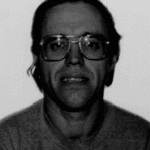
David J Stevenson
David J. Stevenson was awarded the Harry H. Hess Medal at the AGU Spring Meeting Honors Ceremony, which was held on May 27, 1998, in Boston, Massachusetts. The Harry H. Hess Medal recognizes outstanding achievements in the research of the constitution and evolution of Earth and sister planets.
Citation
“A meaningful understanding of the Earth and planets requires explaining their differences. This explanation of planetary processes is difficult partly because it entails a wide range of scales–from microscale, operating at the atomic level, to macroscale, determined by boundaries thousands of kilometers apart. David Stevenson’s graduate study was mainly in theoretical condensed-matter physics, but he is remarkable in his grasp of large-scale planetary processes such as mantle convection and the dynamos. He is also remarkable in his instinct to attack the jugular,’ that is to go for the most important problems and for the versatility of his approaches thereto. Sometimes he achieves a new insight by a back-of-the-envelope’ calculation, which make one think within 30 seconds of hearing about it, Why didn’t I think of that?’ Other times insight may entail elaborate computer modeling. In these cases, he often adapts techniques evolved by others and usually enlists a graduate student, postdoc, or other bright collaborator. This reflects his exceptional ability to assimilate the work of others and to use it to achieve new depths of understanding.
“Here are some examples of David Stevenson’s contributions to our understanding of how the Earth and planets came to be as they are.
“How did the Earth, with its large moon, originate?’ On this problem, Stevenson’s contributions demonstrate his eclectic and synthesizing abilities. While Cameron and Hartmann were first to point out the need for a great impact to account for the moon’s iron deficiency, it was Stevenson who led the charge at the 1984 Kona conference to persuade almost everyone else it had to be so and, in subsequent reviews, to explore the dynamical difficulties. Similarly, he picked up Abe’s demonstration of the inevitability of a magma ocean from the outgassing of a steam atmosphere and pursued its implications.
“How do cores differentiate?’ This is both a microscale (separation of iron from silicate) and macroscale (accumulation of iron blobs big enough to sink in a turbulent environment) problem. The latter is more difficult, and Stevenson’s 1990 paper on the fluid dynamics remains the established word.
“Why does the Earth’s mantle appear to be so close to homogeneous in composition?’ A much more difficult problem, emphasized by Ringwood as the main objection to a magma ocean. In a series of papers with Solomatov in 1993, Stevenson showed that it was feasible as a trade-off of crystal growth and settling and the decline of convection from turbulence. He also has explored the maintenance of this condition in papers on mantle convection, subduction, and the underlying chemistry and physics, as in his 1994 paper for Philosophical Transactions of the Royal Society of London.
“How do crusts differentiate?’ This is, of course, a preoccupation of many geoscientists. Stevenson, in a series of papers from 1986 to 1991, most of them with Scott, developed physical models of magma migration, a combination of the microscale (melting, segregation, and surface tension) with the macroscale (conduit and porous flow within a solid state convecting medium) to explain evidences of sporadic behavior and differentiation at depth. This physical modeling is rather complementary to the more geochemical work of McKenzie and collaborators. Stevenson has also collaborated in the investigation of seismological constraints on magmatism.
“What are the energy sources of terrestrial planet dynamos?’ Since proposed by Braginsky and Verhoogen in the early 1960s, it has been concurred to be the solidification of the inner core, from both gravitational settling and freezing. However, it was Stevenson who first pointed out (in 1983) that this hypothesis was supported by a different outcome in another experiment: Venus, which, if it is like the Earth in all respects except size, must have a completely fluid core, and hence no energy source for magnetic field. This conjecture of a fluid core has since been confirmed by Konopliv and Yoder, who infer a high Love number for Venus from solar tides. Stevenson has also explored the possibilities of dynamo action in Mercury, showing that it is not too small.
“What is the pattern of core dynamics?’ Stevenson investigated the problem of geodynamo generation in several papers from 1974 to 1983, with particular emphasis on the dipole and its near-alignment with the rotation axis. While Braginsky and Busse have done more on the fundamentals and Glatzmaier and Roberts more on the modeling, Stevenson’s particular contribution has been to explain the differences in magnetic fields among the planets, a fine example of comparative planetology requiring knowledge of the differences in physics between the Earth and other planets, both on the microscale questions of fluidity and electrical conductivity and the macroscale questions of the convecting regime and the influence of rotation.
“What is the pattern of mantle dynamics?’ More recently, in collaboration with Tackley, Glatzmaier, and others, Stevenson has explored the nature of mantle convection, with emphasis on the effect of the 670-km endothermic phase transition. This work is still in progress, but indicates that the effect of the phase transition and other nonlinear interactions of the flow system with material properties is to cause temporal variations in the convection, some of them rather episodic avalanches.’
“What are the effects of the high pressures in major planet interiors on the physical properties of hydrogen and helium?’ In a series of papers from 1974 to 1980, Stevenson, partly in collaboration with Salpeter, developed the condensed matter theory to infer the phase diagrams of hydrogen, helium, and hydrogen-helium mixtures; most importantly, that the transition from molecular to metallic hydrogen occurs around 300 GPa. He also developed estimates of thermal and electrical conductivity, the miscibility of hydrogen and helium, and the solubilities of ices important to the thermal and compositional evolution of the major planets.
“What are the implications of the masses, shapes, thermal radiations, magnetic fields, and atmospheric compositions of the planets and large satellites in the outer solar system for their structure and evolution? Since the mid-1970s, Stevenson has continually developed and refined models of planetary interiors to reconcile condensed matter theory with the data gained by spacecraft and telescopes. The major planets are thus inferred to be quite varied in character: Saturn’s heat requires ongoing settling-out of helium, Uranus’ and Neptune’s do not, while in Jupiter it is unsure; and the near axisymmetry of Saturn’s magnetic field indicates a stable stratified conducting layer overlying its dynamo region. Very recently, Stevenson has interpreted the magnetic and gravitational results from the Galileo mission to infer that Ganymede must have an internal source for its magnetic field, but that the magnetic signatures of Europa and Io may be induced by Jupiter’s field.
“What were the circumstances of origin of major planets?’ On the most important problem of the formation of Jupiter, after which the other planets follow, Stevenson and Lunine [1988] showed that there would be a high concentration of ice, hence rapid core formation, by diffusive redistribution of water vapor just inside the radius of condensation. Stevenson has also modeled chemical heterogeneity and imperfect mixing in the nebula and has used the differences in the structure of Uranus and Neptune to infer differences in late-stage impact history.
“What are the physical constraints on bodies intermediate between major planets and stars in size?’ In a few papers between 1978 and 1991, Stevenson extended his condensed matter theory to infer the likely thermal properties, transport properties, and atmospheres of brown dwarfs.
“Dave Stevenson is the Jimmy Levine of geophysics: the omniscient endomorph who incorporates the work of others with his unique insights to produce ongoing models of the planets, satellites, and dwarf stars. The breadth of his view leads to frequent invitations to give summarizing lectures at conferences and to write review papers (for example, four in the Annual Reviews series). He is wiser than us, but beloved because he recognizes and uses what we have to offer: his response is always to point out That’s a good suggestion!’, while tactfully ignoring what is wrong. Thus, in contrast to some other bright people, his overall contribution to our science is greater through the work of those he inspires, as well as through his own.”
—WILLIAM M. KAULA, University of California, Los Angeles
Response
“Thank you, Bill, for those kind comments and thanks to AGU for this wonderful award.
“I grew up in New Zealand, a country that is known for several things, including the export of an unusually large number of excellent scientists, an astonishing number of sheep, and excellent dairy products. When I was young, every morning we received at home one or more bottles of fresh milk. At the top of each bottle, there rose a layer of thick cream the likes of which seem unattainable in this country. It was my father’s prerogative to skim off the cream and pour it on his porridge–a low Reynolds number porridge that took hours to cook and seemingly minutes to pour. I envied my father’s skimming of the cream, but I have learned my lesson well and later in life as a scientist I have tried to skim the cream scientifically, whenever possible.
“There have been other influences in my career. As a graduate student at Cornell, I worked with Ed Salpeter, astrophysicist extraordinaire, from whom I learned the importance of the judicious dropping of factors of pi and the square root of 2 in calculations. At Cornell, I met Carl Sagan and discovered from him that planetary science is a legitimate academic scientific career. Of course, Carl went on to do something else, to the benefit of us all.
“I also spent fruitful and productive years at Australian National University in Canberra and at UCLA. However, by far, the longest time has been spent at the California Institute of Technology, a place that is very special and that particularly suits me. Caltech is an intellectually stimulating place, and I have had the good fortune to work with a small but outstandingly talented group of students over the years.
“I have also had the good fortune to live at the right time to do planetary science. This has been an exciting period of discovery, particularly with missions such as Voyager and Galileo, and the results of these missions have presented me with the opportunity to do the kind of cream skimming that I enjoy. My hope is that the fun will continue. Thank you.”
—DAVID J. STEVENSON, California Institute of Technology, Pasadena, Calif.
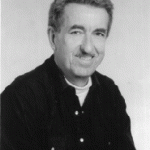
Stanley R Hart
Stanley Hart was awarded the Harry H. Hess Medal at the AGU Spring Meeting Honor Ceremony on May 28, 1997, in Baltimore, Md. The Hess medal recognizes outstanding achievements in research in the constitution and evolution of Earth and its sister planets.
Citation
“Geochemistry has invaded Earth sciences in a way similar to that in which biochemistry has invaded the biological sciences. This invasion is primarily the result of the work done by a few pioneers, who have created the basis of modern geochemistry. When Stan Hart began his Ph.D. at MIT, isotope geochemistry was engaged in the development of modern geochronology. Stan realized that the most important issue in testing the validity of the dates given by the various isotopic methods was to develop a comparative geochronology, which led to the question of how the different chronometers behave when they are subjected to geological perturbation, particularly at elevated temperatures. To study this problem he chose a well-posed example, the Eldora stock, where a young pluton intruded on old Precambrian terrain, and he examined the contact metamorphism and its effects on the K/Ar and Rb/Sr isotopic systems in various minerals. This study still stands as a classic today: It formed the basis for understanding age discordancy between isotopic systems and minerals.
“Stan then moved to the Carnegie Institution of Washington, where the famous quartet Wetherill, Tilton, Aldrich, and Davis were mapping Precambrian rocks in the United States using comparative geochronology. He immediately became a prominent member of the team and inspired many geochronological initiatives. With the migration and restructuring that occurred at Carnegie, he became the leader of what was then called the `young Turks’ with Tom Krogh, Al Hofmann, Chris Brooks, and others. He was already a legend to young people trying to do modern geochemistry, both at home and abroad.
“However, the big test in his career occurred in the late 1960s. Stan, with Jean-Guy Schilling and the late Paul Gast, was one of the few geochemists to realize the potential of the field opened up by plate tectonics and how it was important to study basalts of the ocean floor. At the same time, the exploration of the Moon led Wasserburg to develop a new generation of instruments capable of measuring isotope ratios with an extraordinary precision. Stan and his colleagues at Carnegie had constructed a similar instrument and used it immediately to study sea floor basalts.
“This marked the start of an extraordinary love affair that since then has associated Stan Hart and basalts. Without doubt, he is today `Mr. Basalt’ in geochemistry. Stan has studied basalts in every environment: mid-oceanic ridge basalts, oceanic island basalts, subduction zone basalts, old basalts, Archean basalts. He has also studied basaltic systems in the laboratory, where he was a pioneer in the measurement of partition coefficients for trace elements, but more importantly, he was one of the first to study quantitatively the effect of diffusion and to understand the fundamental problem of how isotopic memories work. His paper with Al Hofmann in the volume honoring Paul Gast is a keystone for geochemistry, isotopic coding with magma, and isotopic memory in solids.
“All of this work engaged Stan and his colleagues in the development of models of the structure and evolution of the Earth’s mantle, and they thereby became front runners in what we call chemical geodynamics. Through his work with his students and postdocs at MIT and Woods Hole, his contributions have been fundamental in various aspects of this field. These are too numerous to mention in detail, but they paved the way to progress in every part of the field. What is perhaps more important is to emphasize how Stan works in geochemistry. First, he takes care of rocks. He knows the rocks well, he is a real expert in modern petrology, and he appreciates various aspects of modern geology. Second, he is an expert in the laboratory. He appreciates instruments, he builds instruments, he loves instruments. With the advent of ion probes, he was one of the first to recognize the potential importance of these instruments, and much of their modern success in the United States can be attributed to his start in this field with Nobu Shimizu.
“On top of this, Stan is an exceptionally talented scientist, he chooses good problems, and he always solves them in an elegant and rigorous way. However, it is as important to recognize his role as a leader. Everywhere he goes, he becomes a leader, not as a science administrator but as an intellectual leader. At Carnegie, he was already a leader. When he moved to MIT, he built the most vigorous group of students in the whole world; now under his influence, Woods Hole is one of the top centers in the world for modern geochemistry. He has produced more students, postdocs, and `students at large’ than anyone. I don’t know anybody who has been as influential to the younger generation as Stan Hart.
“The reason for this is probably because of his special attitude to science and scientists. Stan loves science and innovation, and new discoveries excite him, but the way he practices science is both very competitive and very respectful of the work of other people, particularly those who are younger. Stan especially likes young bright people, and when he recognizes a young talent, in his group or abroad, he helps that talent and encourages it. He also likes acronyms. Some are good, like MORB; some are less good.
“Arguing with Stan has been one of the great pleasures for many in the geochemistry community, especially myself, over the last 30 years. Enthusiastic and critical, competitive and generous, tough and fair, and particularly friendly. This is the way all of us admire and love Stan Hart. No one in our field is a more appropriate recipient of the Harry Hess Medal.”
—CLAUDE ALLÈGRE, University of Paris, Paris, France
Response
“Mr. President, Ladies and Gentlemen,
“You have just heard the official citation, and it is probably obvious that Claude Allègre’s prose is special and should not be delivered by anyone other than the one and only `I Claudius’ himself. So please permit me now to add a few remarks of my own, if only to complement the `Allegro con brio’ with a `Finale presto.’
“Stan has been the reigning guru of mantle isotope geochemistry for as long as I can remember. He has defined its language, mostly by way of coining acronyms, so much that even seismologists now know that mid-ocean ridge basalts are properly called MORB. Guardians of the English language, such as the Royal Society of London and Nature, have tried to tame this monster by renaming it m. o. r. b. However, language has its own way: Stan won the battle with the grammarians. He has coined many other acronyms, such as HIMU, DUPAL, and FOZO. Some of them, like LoNd, are truly ugly, but Stan makes them stick, whether you like them or not.
“By measuring the isotopic composition of strontium in MORB, Stan established the depleted nature of the mantle source that feeds these basalts. This is taken so much for granted today that very few people realize where this knowledge comes from. He measured this, by the way, using a rather questionable method. He simply prepared a composite of a bunch of ocean floor basalt samples and measured the Sr isotopic composition of this single composite. You get an average this way, but you lose all information about the variability of the population. Well, Stan never worried about that. He knew he had the right answer and, in fact, his answer has stood the test of time extremely well. The depleted nature of the upper mantle is a crucial item that ties together the origin and evolution of continents with the evolution of the mantle.
“This story about MORB illustrates one of Stan’s most important characteristics: his almost uncanny intuition about scientific findings as well as about people. I have on at least two occasions trusted that intuition about people against my own judgment, and I have not regretted it.
“Very recently, Stan has written a paper on a subject of profound importance; namely, how do melts get out of the mantle? Those of you who are in environmental science may not find this to be such an intensely interesting subject. However, just remember this: if melts did not get out of the mantle, there would not be much of a crust for us to live on. The surface of the Earth would be totally inhospitable to us, simply because it is the igneous processes which have concentrated anywhere from 30% to 70% of the total inventory of the Earth’s potassium and phosphorous in the crust. Without this potassium and phosphorous, the crust could not sustain even a fraction of the plant, animal, and human life that we take for granted.
“Stan’s paper is an extremely elegant treatment using a fractal tree as an analogue. It has so far been ignored by virtually everyone else in the field, probably because it is so simple and beautiful. Well, my intuition says that Stan has the right answer to the problem and that the infinitely complex processes involved in melt formation, movement, and extraction will all conspire to generate a fractal tree, so that we can understand the overall process without being able to observe all the details.
“There is a final item about Stan that I want to emphasize, something to which Claude Allègre has also alluded: Stan is one of the few top-level scientists who can compete with you and at the same time remain your absolutely loyal friend. I have never known him to knowingly bend his ethical standards to serve his competitive advantage. At a time when the competition for funds has become so fierce that the motto of the American Geophysical Union, namely, unselfish cooperation, is under attack almost every day, we need leaders and role models with such standards if we want to keep science from becoming merely a business enterprise such as selling real estate or used cars.
“Stan, I know you are disappointed that Claude could not come here to deliver his citation; so am I, but at the same time I am very pleased that he asked me to read his speech and to give me the opportunity to get in a few licks of my own.
“Mr. President, may I present Stanley R. Hart to receive the Harry H. Hess Medal.”
—ALBRECHT W. HOFMANN, Max-Planck-Institut für Chemie, Mainz, Germany
RESPONSE
“Mr. President, fellow honorees, colleagues, and guests. Words like honored, grateful, privileged, and appreciative come to mind, but they fall so short! Thank you all. My special thanks to Al Hofmann, the pinch hitter from the Max Planck Institute in Mainz, for stepping into the hole left by the recent Socialist party victory in France; Al has added many dimensions to the citation written by Claude Allègre, and his last minute heroism in donning black tie attire is deeply appreciated (and reinforces again our common heritage as Anthropoidea)!
“I have a wonderful group of family and friends here with me today, and this gives me the greatest pleasure. Pam, my wife and cherished traveling companion, is easily recognizable by her stunning orange gown. No understatement for her tonight! My number one (eldest) daughter Jolene is here, with husband Mark (a.k.a. Harpo). Their young son, Conor, and baby Ciara are back in the hotel room. My newly turned 15-year-old daughter, Elizabeth, and son, Nathaniel, who is 13, round out the well-dressed family in the first row. They provide the center of gravity which enables me to, as some would say, `go off on tangents’ all too frequently. My children literally `span’ my career. Jolene was born in Pasadena when I was a graduate student at the California Institute of Technology; Liz and Nate were born in Boston while I was a professor at the Massachusetts Institute of Technology. Thus I don’t know what it’s like to not juggle family and work; I hope some part of this medal reflects a measure of success with this and the forbearance of my family for lapses.
“It is superfluous to say that my presence at this ceremony also owes much to the help, support, and stimulation of all the students, colleagues, friends, and provocateurs who `rode the rails’ with me over the years. No one of you has failed to leave a thread in my tapestry: Res Ipsa Loquitur (the thing speaks for itself).
“Without burdening you with a roll call, I would particularly like to call attention to the incredible group of colleagues at the Woods Hole Oceanographic Institution who make my present life stimulating and exciting and who contribute crucial signal strength in the sea of soft-money noise.
“On first consideration, I thought I might cast my response in nouns and adjectives only, following the precedent set by last year’s Bowie Medal citationist, Dev L. Advocate. However, I decided that would be too much like a geochemist trying to do geophysics. I would like to pursue a bit the theme of `boundary-crossing’ science, and its importance in today’s research milieu. In particular, I want to commemorate and honor Harry Hammond Hess, whose career was the embodiment of crossover Earth science. As Buddington once noted, Harry Hess “`lived five lives contemporaneously.’” Hess worked as an exploration geologist prior to graduate school, then did a Ph.D. at Princeton on the Schuyler alpine peridotite in Virginia. (It is thus fitting that the present Hess Medal comes affixed to a small block of Schuyler serpentinite!) During graduate school, he did gravity work from submarines and acquired a Naval Reserve rating to facilitate further geophysical studies from submarines. This led to active duty during World War II, ultimately as Commander of an attack transport in the southwest Pacific. Harry’s remarkable passion for geology is captured by the story of noncoms returning to his ship, after landings of extreme hazard, carrying boulders of basalt because they knew their skipper loved rocks! By leaving the sounding gear (depth recorder) on more or less continuously, and with perhaps some liberties in arranging travel routes relative to Naval orders, Hess was able to vastly extend our knowledge of the bathymetry of the Pacific. From this came the discovery of guyots (drowned islands), which were later to figure in Hess’s classic 1962 paper, `History of Ocean Basins.’ Hess introduced this paper as an “`essay in geopoetry,’” but this was a not untypical modest understatement. This paper put forth the hypothesis of seafloor spreading, with explicit recognition of the necessary affiliated processes of new ocean crust formation and mantle convection. In 21 pages, the world of geology was changed forever.
“When I first met Harry Hess during a lecture stop at Princeton in the early 1960s, I was surprised to find a quiet and low-keyed individual (quite unlike the isotope geochemists who formed most of my professional horizons). However, the remark I like best about Hess, relayed by Hal James in his memoir of Hess, was from a Princeton dean who was heard to remark of Harry that “`his bite was worse than his bark!’”
“Hess characterized his famous seafloor spreading paper as “`geopoetry.’” Perhaps on this occasion you will give me leave to indulge in some `geopolitics.’ A prime concern of scientists today is the ever-increasing fiscal constraints on the conduct of science and the resulting malaise and mean-spiritedness overtaking this community of scholars. The need for formulating budgetary priorities inevitably leads to the basic science versus applied science conundrum. In fact, I don’t see any strategic difference between basic research (or so-called curiosity-driven research, which trivializes the practice) and applied research (which trivializes the practitioners); they are one and the same, differing only in the term or timescale of the investment. Basic science is the tool we use in nurturing both investments: it is the shovel we use to plant our trees, the fertilizer we use to make them flourish, and the saw we use to harvest them. It matters not whether we use the shovel, the fertilizer, or the saw. What matters is our commitment to strive for excellence in the endeavor. Trees that grow slowly and trees that grow quickly are both trees; one is not better, one is not inferior.
“Let us go forth with our shovels and saws. Let us attract our constituency to a conversation about investment in trees. Let us reason with them to show that before we can harvest a tree, we must plant it; before we can plant it, we must dig an empty hole in the ground.
“For the pleasure I have had in my career, past, present and future—I thank you all.”
—STANLEY HART, Woods Hole Oceanographic Institution, Woods Hole, Massachusetts
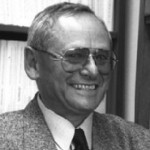
Thomas J Ahrens
Tom Ahrens was awarded the Harry H. Hess Medal at the AGU Fall Meeting Honor Ceremony on December 17, 1996, in San Francisco. The Hess Medal recognizes outstanding achievements in research in the constitution and evolution of Earth and its sister planets.
Citation
“Tom’s research career spans more than 30 years and more than 300 research papers, so it is difficult to adequately summarize his work here. It is also difficult for one person to span Tom’s range of interests, so I will concentrate on Tom’s shock wave contributions to our understanding of Earth. He has also done much work on understanding the effects of planetary impacts (with implications ranging from planetary accretion to cometary impacts on major planets) and much basic research in materials science. His work directly impacts (pun intended) our understanding of the origin and evolution of Mars, Moon, Jupiter, Venus, and Earth. Since the Hess medal is given for outstanding achievements on research in the constitution and evolution of Earth and its sister planets, awarding the medal to Tom seems not merely appropriate, but rather inevitable.
“For almost all of geophysical history, Tom has run academia’s premier shock wave laboratory. Given the expense of such experiments, it is no small testament to Tom’s unique abilities that he has kept this laboratory operating, funded, and populated with excellent graduate students and researchers. Many of Tom’s early papers dealt with the fundamental understanding of the response of materials to dynamic loading as well as basic developments in shock wave technology. He extensively studied both solid and molten silicates undergoing shock loading and was the discoverer of major phase transitions in several minerals. His work on structural changes in molten silicates has profound implications for our ideas of planetary evolution. He was the first to conduct shock wave experiments on lunar samples and soon thereafter was the first to do planetary cratering calculations.
“Tom always seems to be doing several things at once, so in the early 1980s we find him writing on the effects of large impacts and extinctions, on shock wave-induced temperatures in silicates, on iron partitioning in the mantle, on electrical measurements in shocked minerals, on the composition of the core, on shock-induced devolatilization and the generation of planetary atmospheres, and much more.
“By the late 1980s, Tom and his coworkers had developed shock wave temperature measurement methods for opaque minerals and soon had the first direct estimates of the melting temperature of iron at core pressures. These difficult experiments gave surprisingly high temperatures for the melting of iron and were extremely controversial. By and large, these results have held up over time and have basically been verified by more extensive experiments by the government laboratories.
Tom has also done many of the fundamental experiments on alloys of iron of relevance to the Earth’s core that give us the information we need to talk intelligently about core composition. Tom continues to develop dynamic loading technology with experiments on preheated specimens to increase the range of pressure-temperature space sampled by the technique and with improved techniques for measuring sound velocities in shock experiments.
“While many of Tom’s papers report basic equation of state data, he also uses these data to make important inferences about the Earth and the properties of minerals at high pressure and temperature. His papers with coworkers address such diverse issues as core composition, thermal expansivity of the mantle, the behavior of volatiles in planets, and sound velocities in mantle materials, and these serve to identify the next important experiments that Tom will surely be the one to do in the future.
“Well, enough of this dry detailing of a stellar academic career. What about Tom the man? After digging around, I came up with some revealing stories. It is well known that Tom has always been an extremist with regard to laboratory safety, and when you make your living blowing things up, this is not a bad idea. However, on a summer afternoon in 1970, his secretary at that time noticed an explosion had occurred close by in the neighborhood.
A cloud of smoke was rising from the original (and still operating) `lower’ Kresge Seismological Laboratory! The Seismological Laboratory offices at that time were about 100 yards up the road from the lower laboratory, so Tom raced down the road to find the doors to the outside flung open with smoke pouring out of the Shock Wave Lab. A laboratory technician, David Johnson, was in the control room, shaken up but unhurt.
However, the gun was in two pieces, neatly separated at the midjoint in the barrel. It was later discovered that David had mistakenly assembled the gun with 0.5-inch hardware store bolts instead of high-strength steel alloy bolts. The hardware store bolts had lasted three shots. Twenty two of the bolts had sheared off, the doors to the outside were flung open by the blast, and some 8 feet of drainpipe next to the door was flattened. The flattened drainpipe remains to this day!
“The upshot was that red lights now adorn all doors to the “new” Shock Wave Laboratory (the Roland and Helen Lindhurst Laboratory of Experimental Geophysics), and you are advised to not stand by them during experiments. Incidentally, the shot that blew the doors open (and took out two ventilators) provided good data for orthoclase, which was published in the Journal of Geophysical Research in May 1973.
“A second story concerns Tom’s first attempts at “recovery” experiments in 1967. The Provost of the California Institute of Technology was concerned that the neighbors of the Kresge Seismological Laboratory who inhabited a row of mansions across from the ritzy Annandale Golf Club might have problems with large gun blasts. An acoustical consultant was hired who suggested that a test gun be fired in the proposed laboratory space while he made measurements outside. Tom went to Sears and bought a single-shot 12-gauge shotgun for $79.95. The test shots were barely audible outside so Tom immediately bolted the gun down and started firing at mineral samples! As sporting shotguns cannot really handle heavy plastic projectiles, several $79.95 shotgun specials were blown up before a proper 12-gauge (now renamed 20 mm to be politically correct) recovery shock apparatus was machined.
“Tom has done much more than blow things up and write papers. He has worked hard for AGU, has supervised a stellar array of graduate students and postdocs, and has probably done more than almost anyone to make mineral physics the important part of AGU that it now is. It is most fitting that AGU now recognize Thomas J. Ahrens with the 1996 Harry H. Hess medal.’
—GUY MASTERS, Scripps Institution of Oceanography, La Jolla, Calif.
Response
“President Sean Solomon, Members and Fellows of the AGU, Ladies and Gentlemen.
“I am thrilled and honored to receive the Harry H. Hess Medal. Thank you, Guy Masters, for your kind and generous words.
“First, I want to thank my entire family for their love and support. I am also forever indebted to many wonderful collaborators, many of whom are here, as well as donors like Helen Lindhurst and the proposal reviewers over the years who have enabled my research.
“My introduction to the questions of the evolution of the Earth and planets came from the Massachusetts Institute of Technology’s Patrick Hurley during my undergraduate years. I went into Earth science and planetary science because I love the Earth—its many moods on the surface, the land, and the sea. (However, its problems, unfortunately, led me into blowing up rocks in the basement.) Further inspiration came from Frank Press and Harrison Brown at the California Institute of Technology where I was first a graduate student.
“During the following year, while I was fulfilling my ROTC commitment as an Army Second Lieutenant at Aberdeen Proving Ground, Maryland, I had the good fortune to be assigned to work on the problem of the ground shock vulnerability of the NIKE Air Defense system. The Army was starting to put these missiles underground in bunkers. I learned that you could describe the dynamic properties of rocks by measuring the kinematics of shock wave propagation.
“At the close of my Army tour I was fortunate to be taken on as a graduate research assistant by Samuel Katz at Rensselaer Polytechnic Institute. Sam Katz was a student of Maurice Ewing at Lamont-Doherty Geological Observatory. After Lamont, he went to work for a geophysicist, Thomas Poulter, who was an Antarctic explorer and an expert on the geophysical applications of high explosives, at Poulter’s laboratories at Stanford Research Institute (SRI).
Sam Katz had just come to Rennselaer from Poulter Laboratory at SRI, where this group was pioneering the application of explosively induced shock waves to measure the dynamic compression of metals. In 1962, after receiving a Ph.D. from Rennselaer, I went to work at Poulter Laboratory myself, and began to use high explosives to study the properties of rocks and minerals. My first paper on Shock Compression of Crustal rocks, coauthored with Victor Gregson Jr., appeared in the Journal of Geophysical Research in 1964. This was exciting, hands-on research. I came home at night with my ears still ringing from the day’s explosions and with TNT under my fingernails.
“I began to realize that the high-pressure dynamic properties of Earth materials could be applied to understanding both the physics of planetary interiors and impact processes. At that time, our primary interest was on impact cratering on the Moon. President Kennedy had just announced the United States’ intention to race the Soviet Union to the Moon.
“However, in July 1965 the Mariner 4 spacecraft sent man’s first images of Mars’ surface to Earth, and to my, and many others’ surprise, the surface of Mars was also heavily impact-cratered. Thus planetary surfaces, other than the Moon, were also cratered.
“I decided to pursue the study of shock effects in minerals, in part to understand the effects that Eugene Shoemaker, recipient of the 1996 Bowie Medal, was studying.
“The high-pressure, rutile-structured polymorph of quartz had just been synthesized in Moscow by Sergei Stishov, who was then a graduate student. A few months later, Ed Chao, Eugene Shoemaker, and coworkers discovered this phase at Meteor Crater, Arizona, and named it stishovite.
This was the first silicate mineral in which oxygen was in octahedral coordination with silicon— a precursor to unraveling the mineralogy of the lower mantle. I realized that the properties of high-pressure phases of minerals could be studied using shockwave data. I applied to NASA for support and began research on shock compression of minerals.
It was only in 1972, when I went to my first Conference at the Lunar and Planetary Institute, that I realized the role Princeton’s Harry Hess had played in establishing NASA’s Planetary Exploration Program—a program that has benefitted the research of many in this room.
“In 1967, Caltech was seeking a junior faculty member who was interested in relating seismic velocity to depth profiles, like those Don Anderson and his students were measuring, to determine their relationship to high-pressure mineralogy and temperature.
Several months after a tongue-in-cheek discussion with Frank Press, who was then Chairman of Geology and Geophysics at MIT, as to whether one could mount a big gun vertically onto the tall skinny MIT Green Building, Caltech appointed me to the geophysics faculty. This has been a superb highly supportive environment in which to conduct research and teach.
“At that time, the Caltech geophysics group was mainly located in the Seismological Laboratory. The Seismology Lab offices were housed on a spacious mansion in the San Rafael Hills, 5 miles west of campus in an exclusive neighborhood adjacent to the Annandale Country Club. As Guy Masters explained, this did not appear to be a good place to conduct high-explosive experiments!
“As many in the audience know, the adjacent seismographs, surprisingly, never detected our high-frequency gun-launched shock experiments. Moreover, I began to work with a number of talented and innovative graduate students and, later, postdoctoral fellows and visitors, who taught me many things.
“Later, Gene Shoemaker introduced me to Helen Lindhurst, who provided funds for the Lindhurst Laboratory of Experimental Geophysics in the Geophysics and Planetary Science Building at Caltech.
“I will stop at this point to also thank the dedicated technical and administrative staff and leaders of Caltech over the years, as well as the graduate students, postdoctoral fellows, and visiting associates with whom I have so far collaborated both at Caltech and elsewhere.
“It gives me great pleasure to receive AGU’s Harry H. Hess Medal.
“Thank you very much.”
—THOMAS J. AHRENS, California Institute of Technology, Pasadena

Edward Anders

Alfred Edward Ringwood

George W Wetherill

Alastair G W Cameron

Julian Royce Goldsmith

